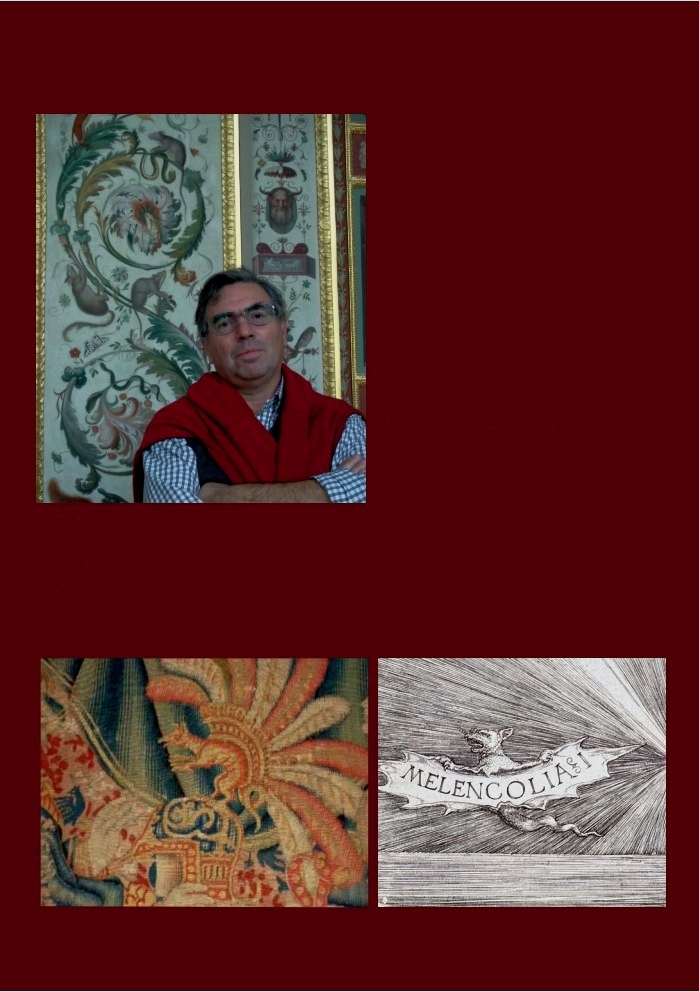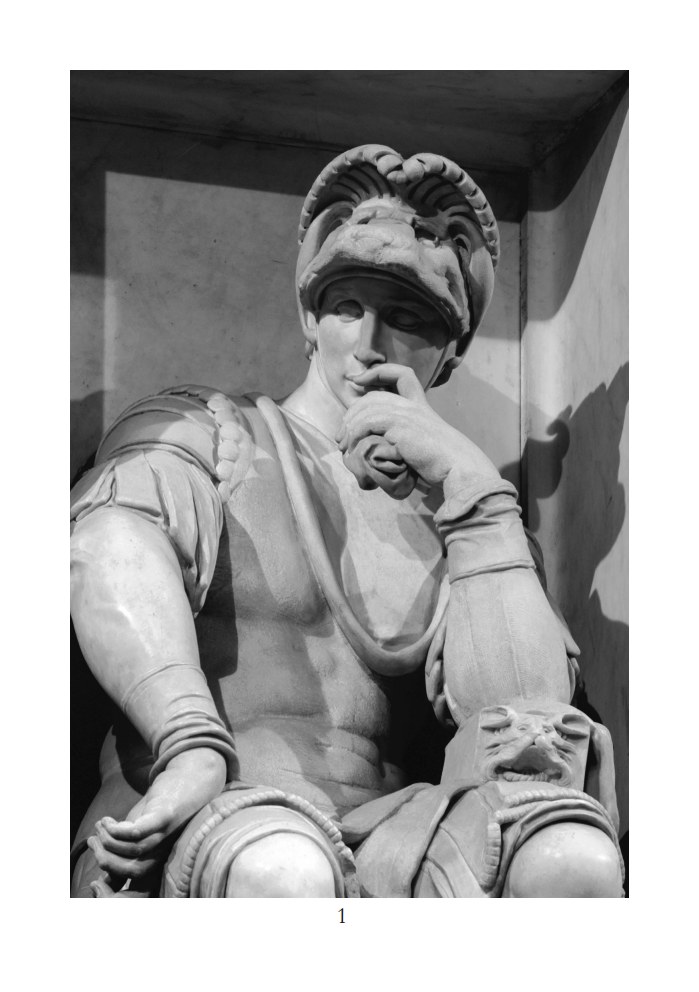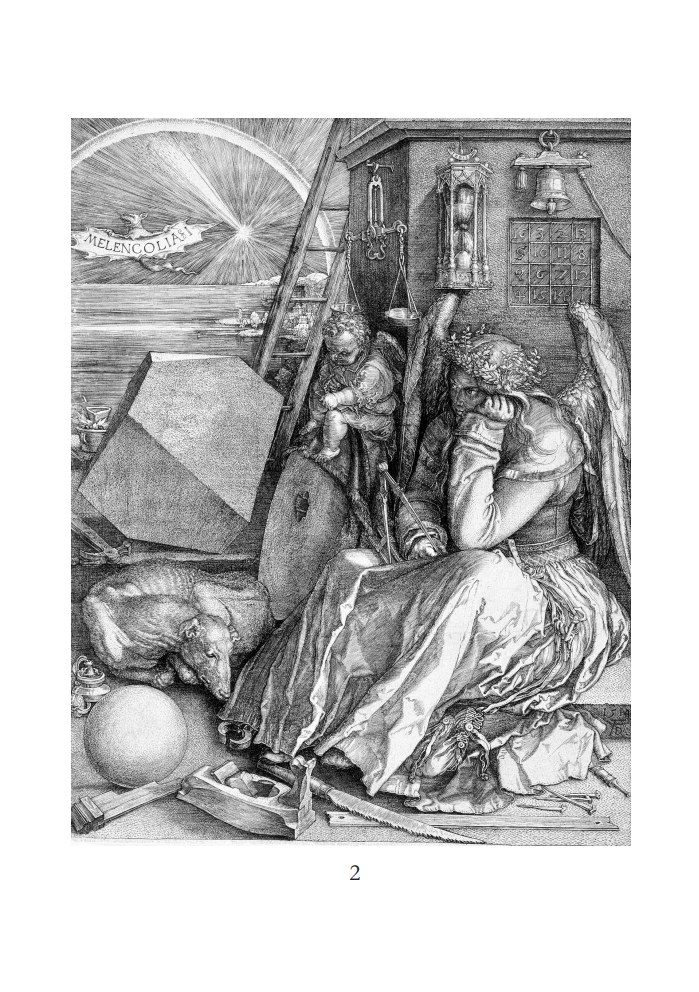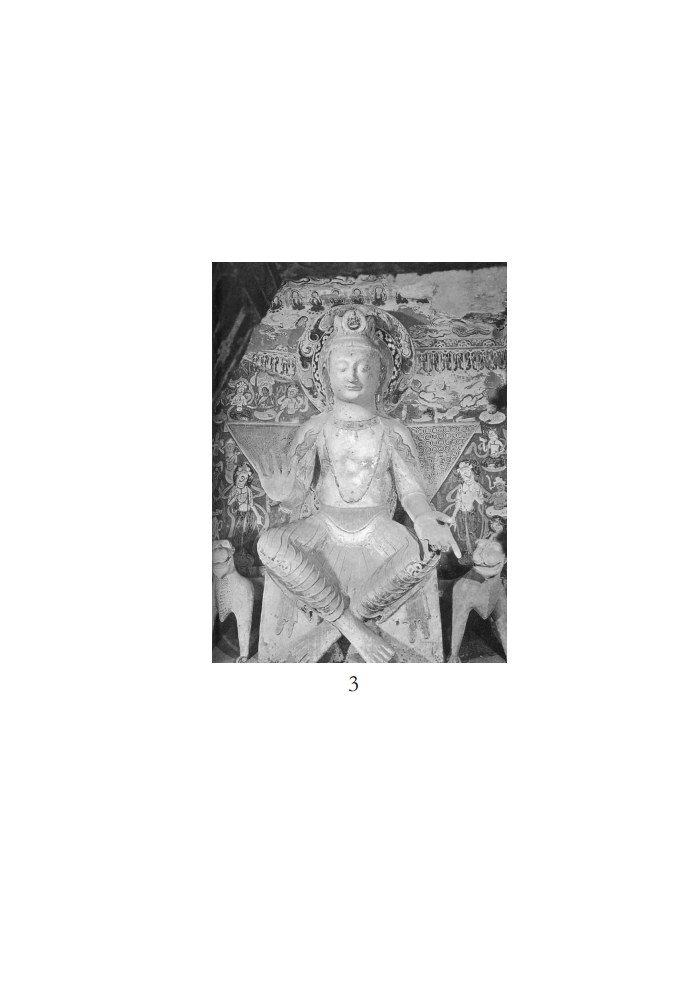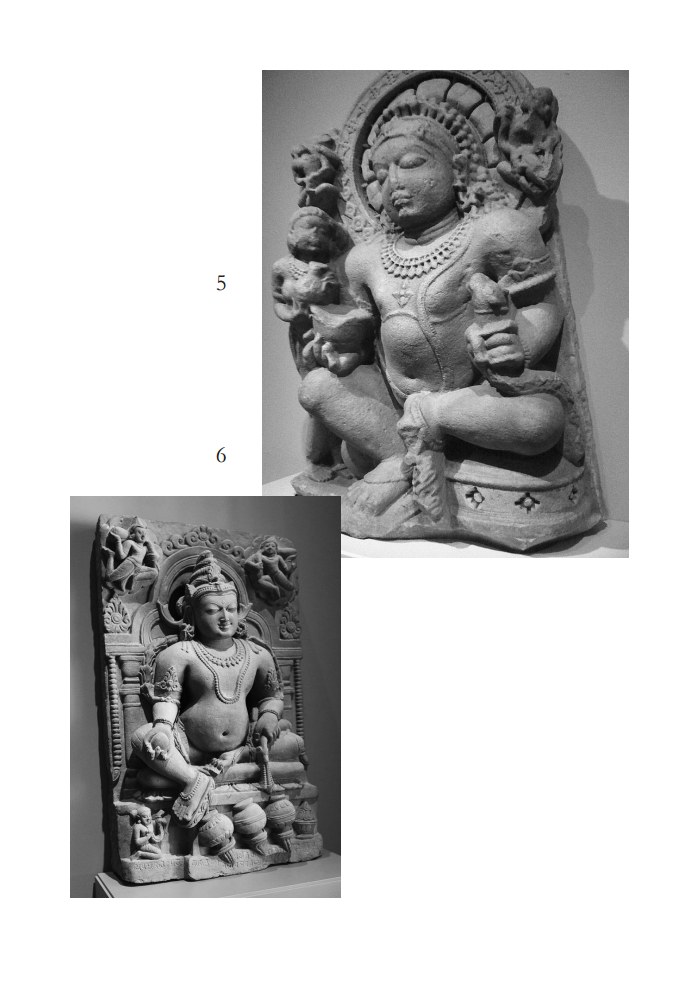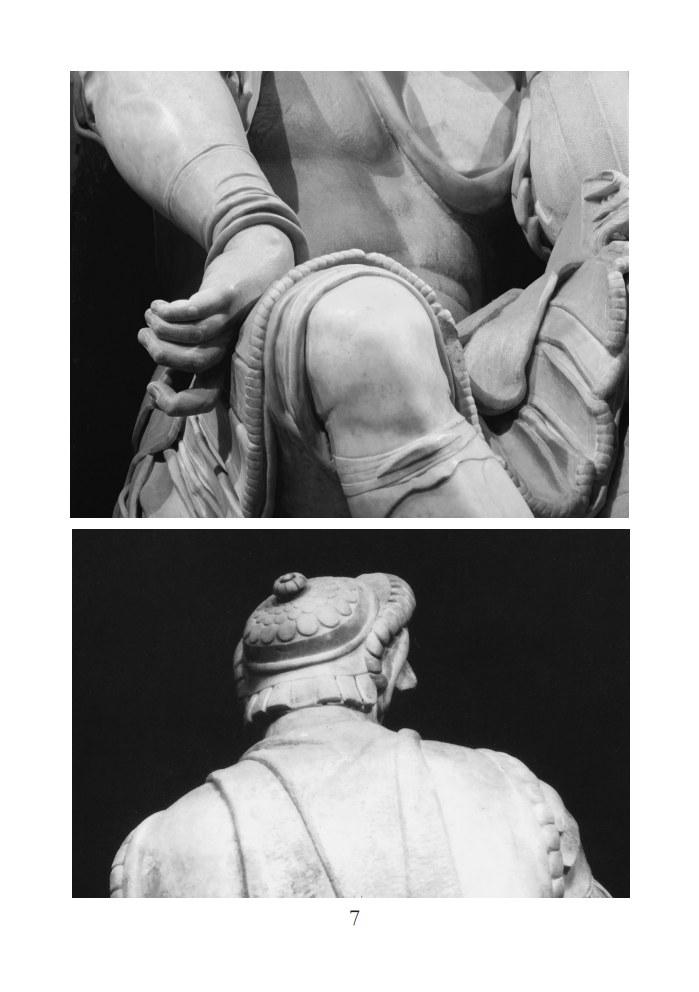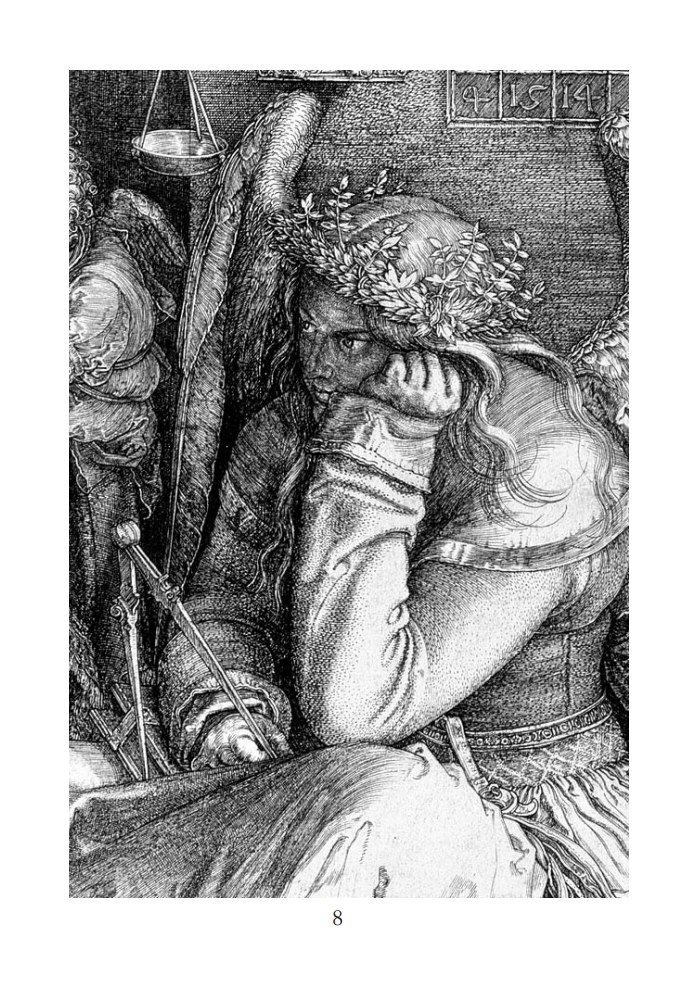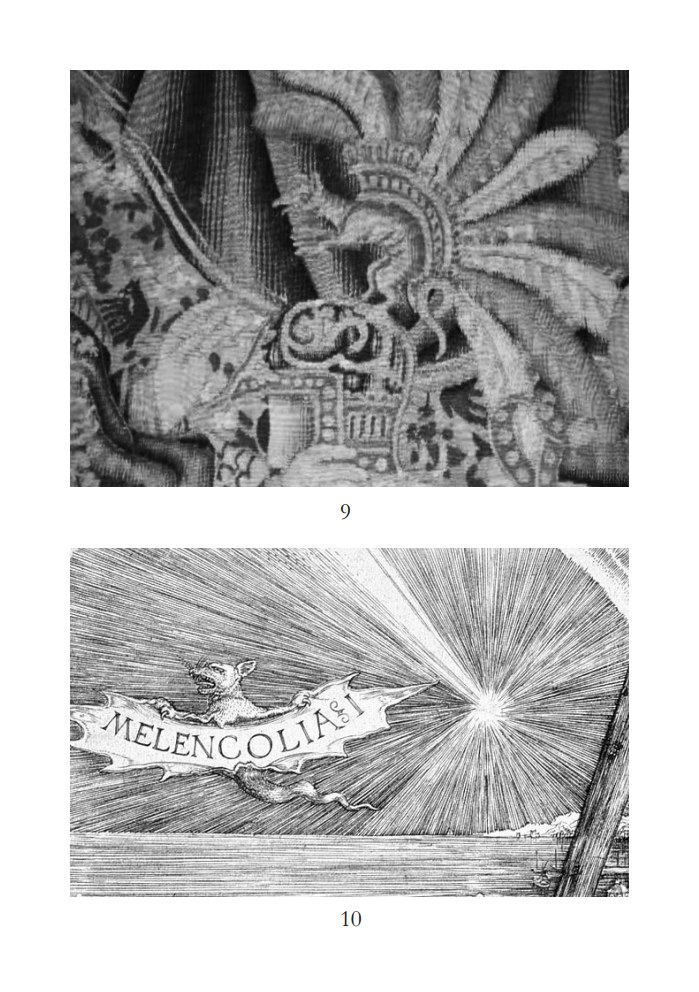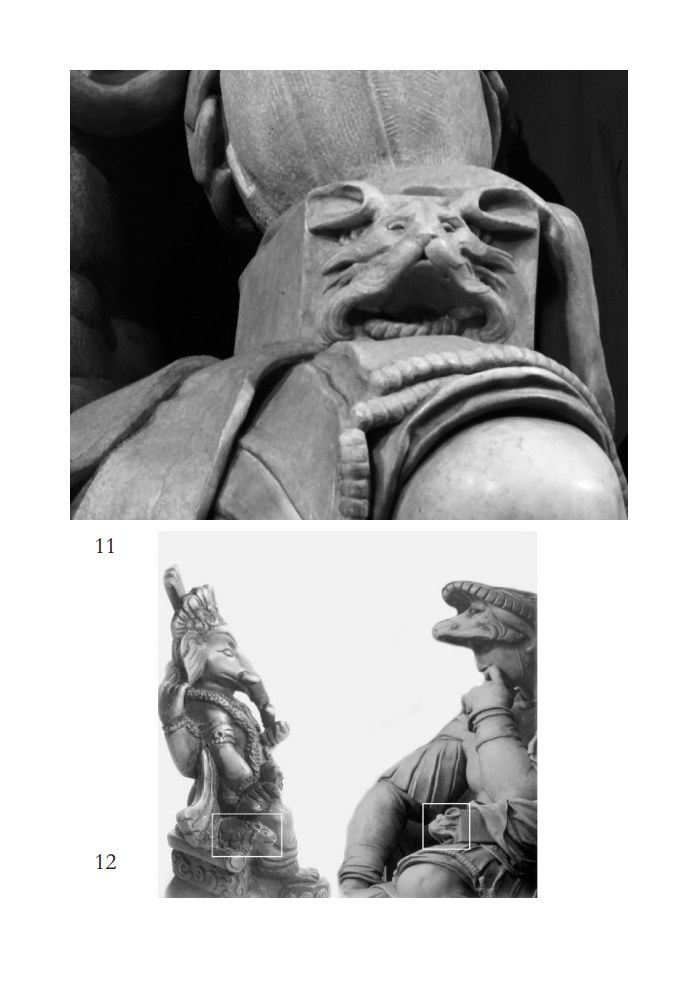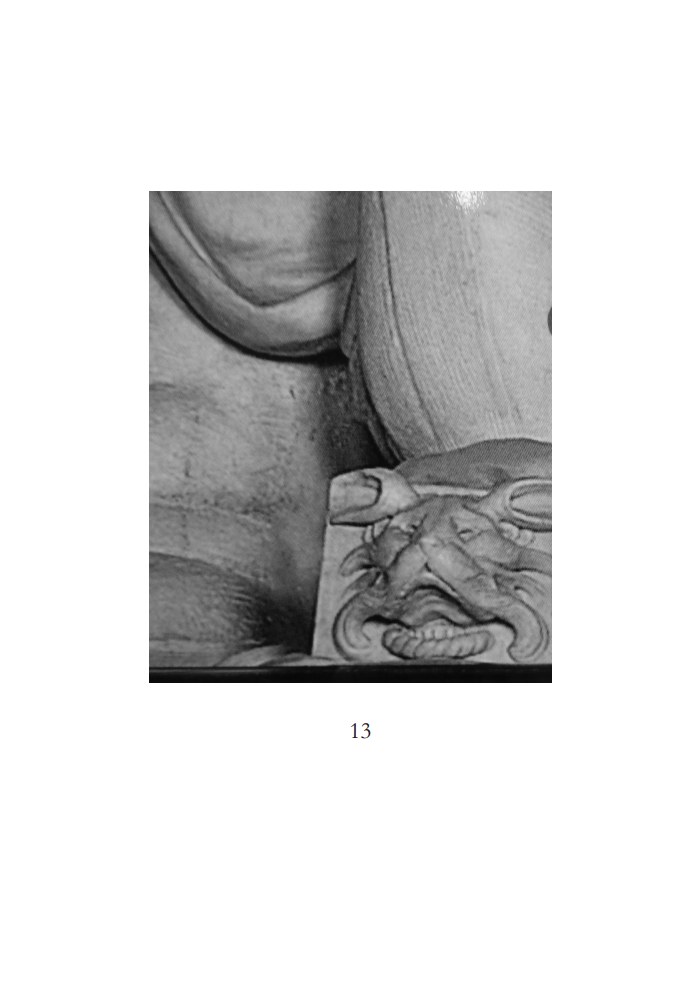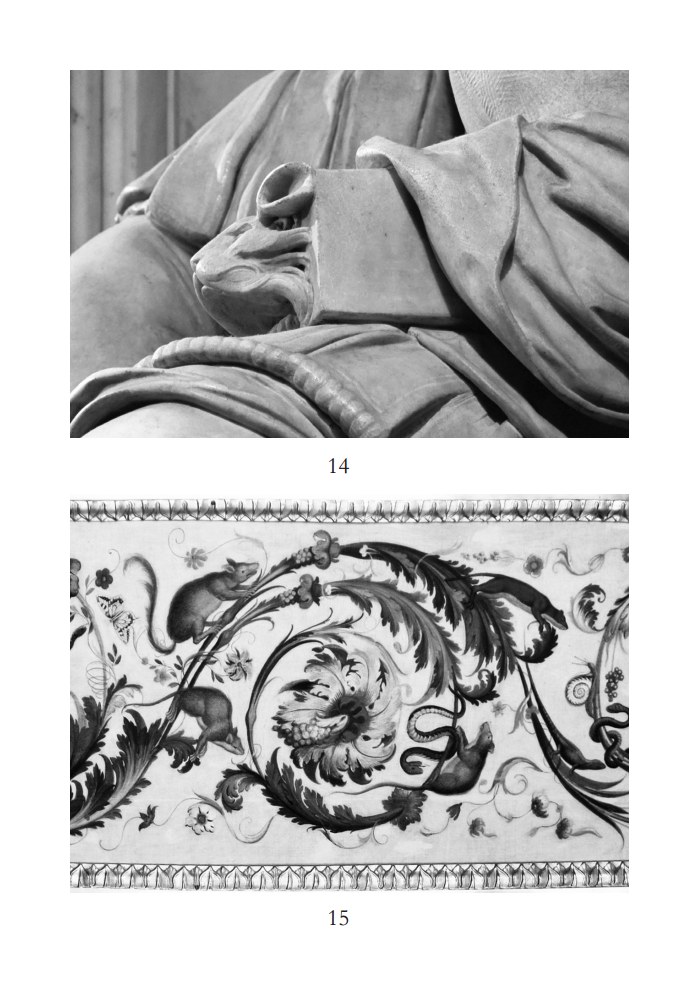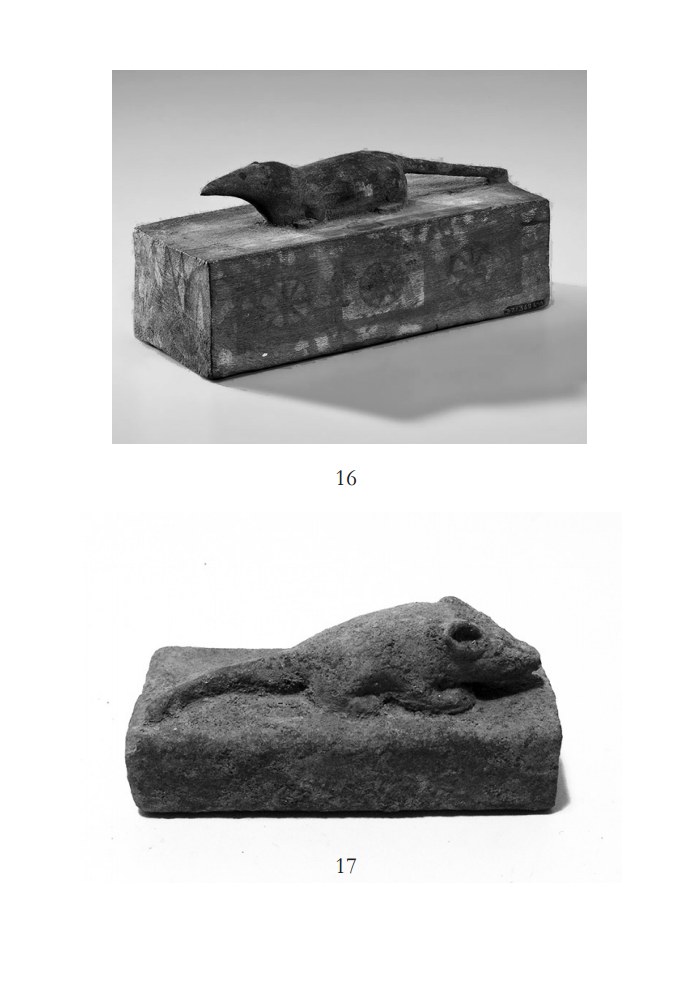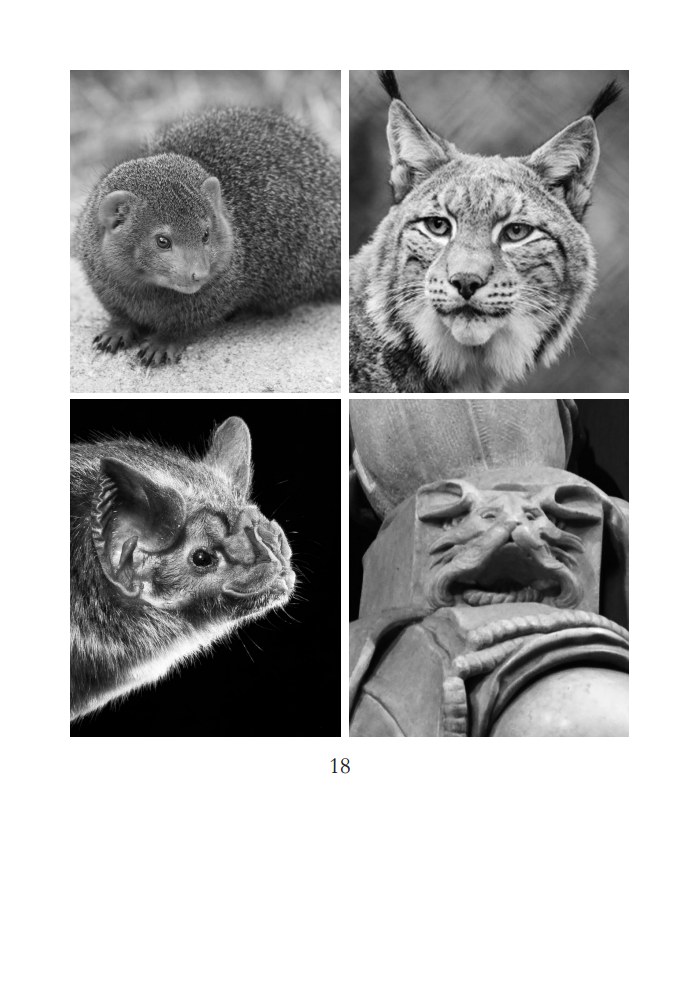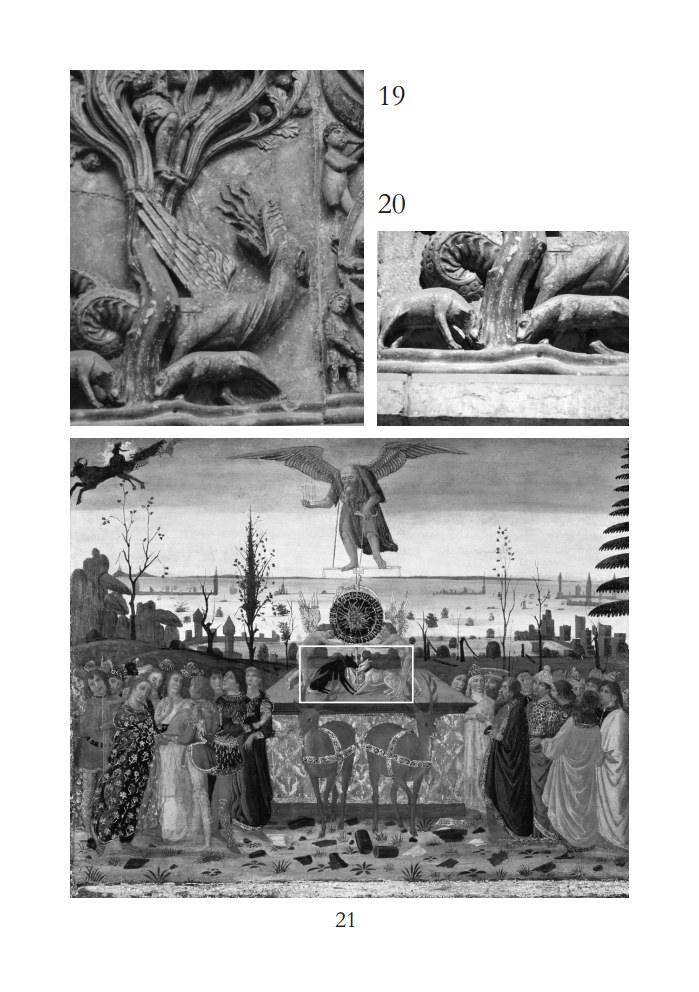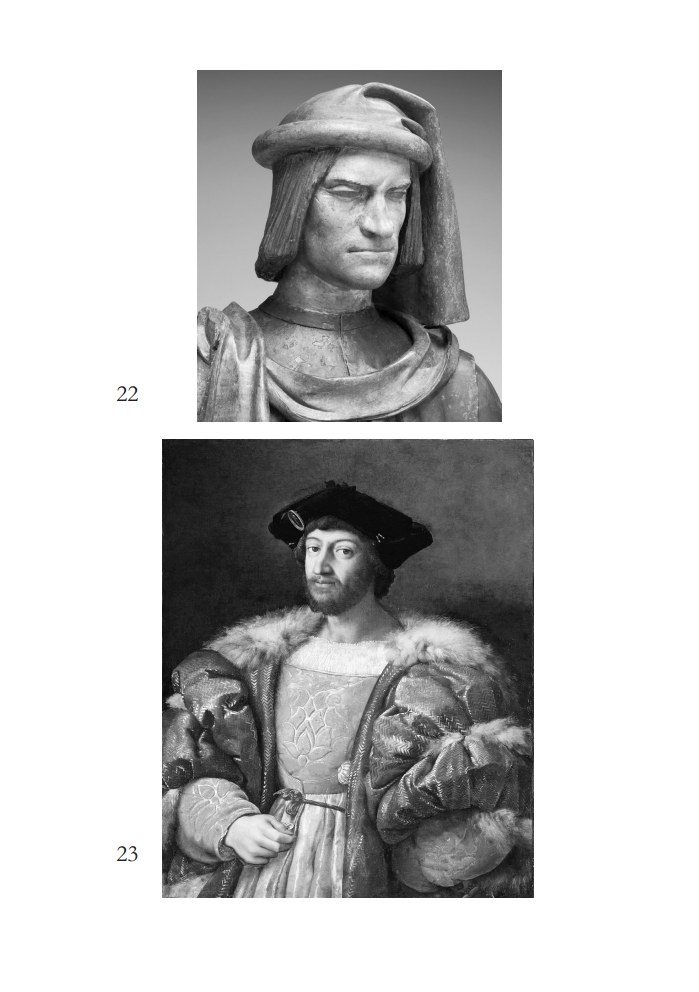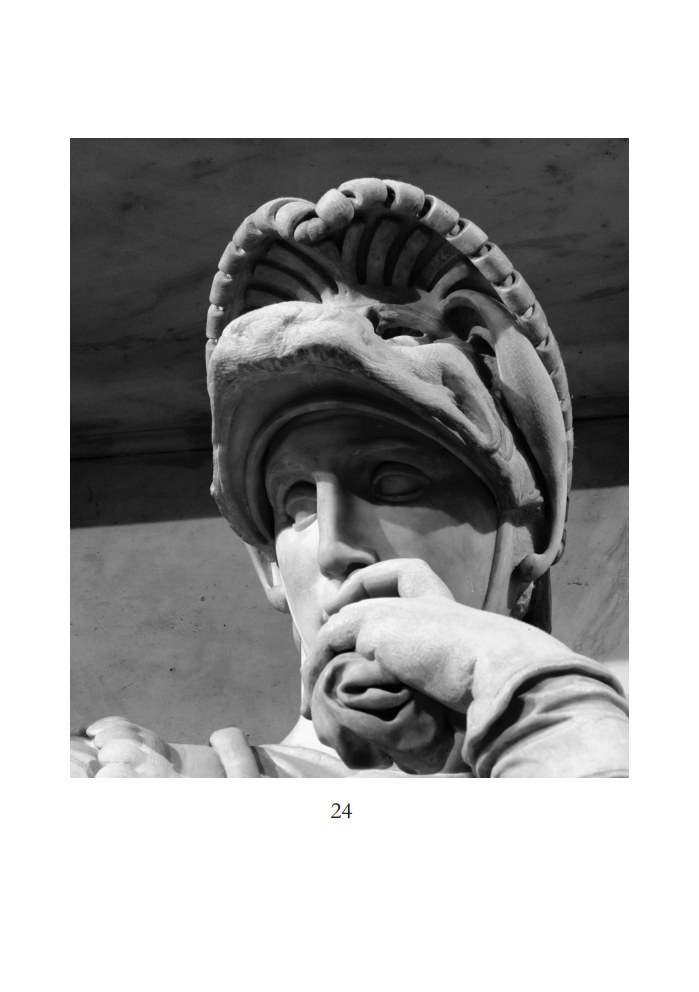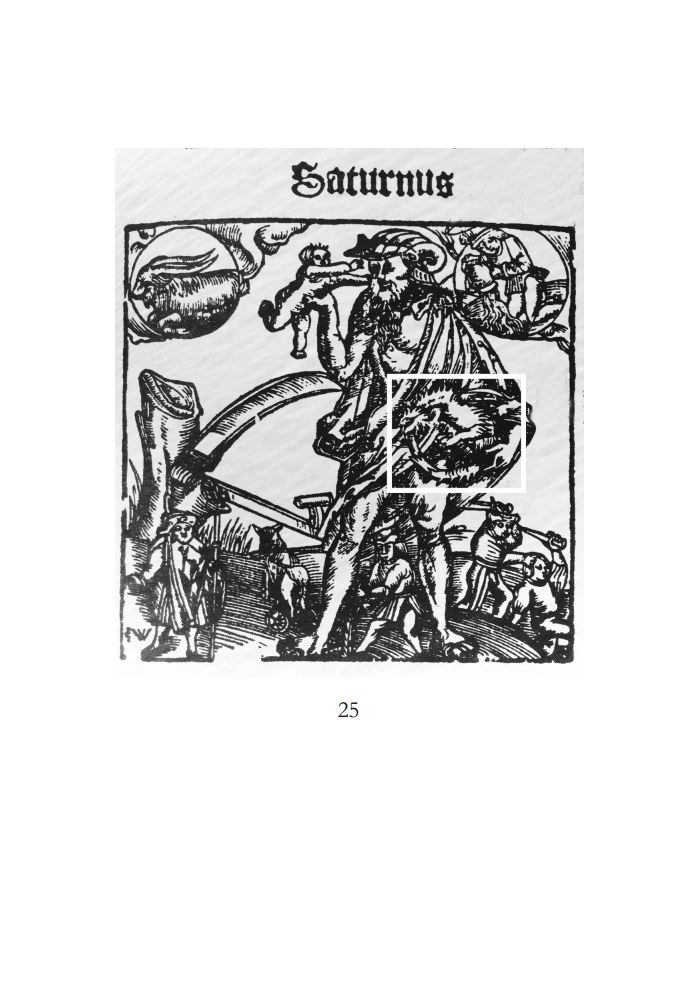


This small book is addressed to professional art historians and enlightened amateurs, so I will go neither into detailed descriptions of the New Sacristy of the Medici Chapel nor into the history of its creation. Both can be easily found in numerous other publications. For those interested in an addressed visual acquaintance, the best option is to study the photo album by James Beck, Antonio Palucci, and Bruno Santi – “Michelangelo. The Medici Chapel” (London, 1994). But since this publication is not available for online viewing, one might also try looking at the photo album we made with Sergei Shiyan – “Michelangelo in the Medici Chapel: Genius in the Details” (Library of Congress N6923.B9 B343 2011-2018) or watch the 45-minute documentary we shot in the Medici Chapel and on the streets of Florence (even though this educational film has Russian voiceover, it includes a silent 20-minute visual tour of the New Sacristy).
The outline of this work includes several new theses:
The statue of Lorenzo has retained its unofficial title the Thinker (Il Pensieroso) for nearly five centuries. Many researchers, pointing to the lack of similar sculptures anywhere in Europe, emphasize the innovative skill of Michelangelo. Many have tried to unravel the ideas incorporated by Michelangelo in the statues of the Medici Chapel. But nobody has ever mentioned that this statue shows some similarity with the sculptures of Hindu deities and Buddhist saints, especially those including animal images.
The prominent art critic Erwin Panofsky (1892-1968) tried to pay attention to all possible details, including a written account left by Ascanio Condivi (1525-1574) about Michelangelo’s desire to carve a mouse in the Medici Chapel as a symbol of all-devouring Time. “Erwin Panofsky was the most influential art historian of the twentieth century...” (see Introduction by Jeffrey Chipps Smith in Erwin Panofsky’s “The Life and Art of Albrecht Dürer,” Princeton University Press, Princeton, 2005, p. XXVII).
Panofsky even wrote a separate article on this topic. The attention of such a great professional as Panofsky to a seemingly small detail of the conception behind the Medici Chapel makes it possible to assume that Oriental ideas which were quite well-known in Renaissance Italy.
The influence of Oriental religions on Europe can be traced back to the times of the Roman Empire. “The mass of religions at Rome finally became so impregnated by neo-Platonism and Orientalism that paganism may be called a single religion with a fairly distinct theology...” argued prof. Edith Balas, one of the most authoritative modern researchers of the Medici Chapel (Edith Balas, Michelangelo’s Medici Chapel: A New Interpretation, Philadelphia, p. 179).
The Oriental influence on the art of the Middle Ages and Renaissance was very much written about in the times of Panofsky: for example, in France where there existed a whole school of comparative art research.
In a scholarly paper, entitled The Interaction Between the Artistic Traditions of the East and the West in the Comparative Art Studies of Jurgis Baltrušaitis, the Lithuanian researcher Antanas Andriyauskas writes:
The rise in popularity demonstrated by the comparative method of research in modern humanism is caused by various factors, among which, first of all, can be mentioned the collapse of Eurocentrism, the strengthening of universalist tendencies in the contemporary culture, the closer ties between different civilizations [and] the desire to reconstruct the true history of various spheres of the human culture... Plunging into the world of Romanesque art, full of floral and zoomorphic images, Baltrušaitis unexpectedly discovers many elements [that are] Eastern in their origin... Considering the galore of fantastic forms of Gothic art, Baltrušaitis admits that, regardless of their origin—Hellenic, Islamic, Indian, or Chinese,—they all intertwine in a single flow of artistic phenomena, and it is their various metamorphoses that make up the Gothic world. Comparing the images of various monsters, dragons, devils, monsters, half-humans, and half-animals in Chinese, Indian, and West European (Gothic) art, Baltrušaitis proves that the origin of Gothic phantasmagoria lies well beyond the ecumene of Antiquity.
And now for a quote from Baltrušaitis himself: “Medieval artists do not reject a wide range of ancient and exotic figurative world, which fed their imagination for a such long time... It includes the Islamic world, which since the eleventh century provided more and more new motives. And finally, it includes the Almighty East — unexpectedly opened up all the way to China — which from this time on makes an impact on several great civilizations.” (Baltrušaitis, J. Le Moyen age fantastique. Paris, 1982, p. 7.)
Now we would like to quote from the Oxford historian Peter Frankopan:
The vibrancy of the cultural exchange as Europe and Asia collided was astonishing. Statues of the Buddha started to appear only after the cult of Apollo became established in the Gundhara valley and western India… 120 Roman boats were sailing to India each year… Roman amphorae, lamps, mirrors and statues of gods had been recovered from a wide range of sites [in India], including Pattanam, Kolhapur and Coimbatore… Commerce opened the door for faith to flow through… The spread of Buddhism from northern India along the trade routes taken by merchants, monks and travelers accelerated rapidly… As religions came into contact with each other, they inevitably borrowed from each other… [Some missionaries] tried to codify the fusion of Christian and Buddhist ideas, producing a “hybrid” set of gospels… There was a theological logic to this dualistic approach, usually called Gnosticism… Few understood better than Buddhists how important it was to publicize and show off objects that supported declarations of faith… (Peter Frankopan, The Silk Roads: A New History of the World. New York, 2016, pp. 9, 17, 31, 32, 57, 59, 60).
And now for another supporting quote:
As a study on the objects of art on the “silk road” shows, as far back as the 3rd-4th centuries BC small-sized (25-40 cm) statues, with a masterly skill depicting Buddhas and Bodhisattvas, were made in India to be easily transportable (see the chapter called “Silk Road: Kushan Art in the North” in History of Civilization of Central Asia, Vol. 2, ISBN 978-92-3-102846-5.)
In the Platonic Academy, Michelangelo might have heard discussions or references to one of the first Gnostic movements – Manichaeism and have remembered therefrom that the founder of this movement – Mani, a great painter himself, had considered graphic art as a tool capable of clarifying the meaning of a religious doctrine no worse than a written text. From the notes of St. Augustin, the Florentine philosophers might have learned that Mani had considered music as a message from God. An Arabic description of Mani painting on silk did survive in history. It was left to us by the Persian Sunni Shafi’i jurist and mutakallim theologian – Imam al-Haramayn Dhia’ ul-Din Abd al-Malik ibn Yusuf al-Juwayni al-Shafi’i (1028—1085). His name gets commonly abbreviated as Al-Juwayni and can be also referred to as Imam al Haramayn). (Wikipedia)
Mani (Latin: Manichaeus) (216-274 AD) was the prophet and the founder of Manichaeism, a gnostic religion of Late Antiquity . He was born in southern Mesopotamia, in an ascetic Judaeo-Christian sect which he left in his mid-twenties. The canon of Mani included six works originally written in Syriac Arameic, and one in Persian, the Shapuragan. While none of his books have survived in complete form, there are numerous fragments and quotations of them, as well as a large amount of material in Middle Persian, Coptic, and numerous other languages. Examples of surviving portions of his works include:, the Fundamental Epistle (quoted in length by Saint Augustine), a number of fragments of his Living Gospel (or Great Gospel), a Syriac excerpt quoted by Theodore Bar Konai, and his Letter to Edessa contained in the Cologne Mani-Codex. Mani also wrote the book Arzhang, a holy book of Manichaeism unique in that it contained many drawings and paintings to express and explain the Manichaeist creation and history of the world.
Mani was claiming to be the reincarnation of the Buddha, Lord Krishna, Zoroaster, and Jesus, depending on the context in which he was carrying out his preachings. Such strategic claims fostered a spirit of toleration among the Manichaeans and the other religious communities and this particular feature greatly assisted them in gaining the approval of authorities to practice in different regions along the Silk Road. Mani’s teaching was intended to succeed and surpass the teachings of Christianity, Zoroastrianism, and Buddhism. Mani claimed to be the Paraclete promised in the New Testament, and the Last Prophet. Manichaean tradition is also noted to have claimed that Mani was the reincarnation of different religious figures including Zoroaster, the historical Buddha, as well as Jesus. (Wikipedia).
Other than incorporating the symbols and doctrine of dominant religious traditions, Manichaeism also incorporated the symbols and deities of indigenous traditions — in particular, the Hindu deity Ganesha — into its fold, which is demonstrated by the image available in the article “Manichaean Art and Calligraphy” by Hans-Joachim Klimkeit. (Wikipedia)
Here we can make an important remark that statuettes and paintings of images of the Buddha, Bodhisattvas and Ganesha should be present in Italy at least from 4th century when by historical records Manichaeism was established in Italy.
Manichaeism spread with extraordinary speed through both the east and west. It reached Rome through the apostle Psattiq by 280 CE, who was also in Egypt in 244 and 251. It was flourishing in the Fayum area of Egypt in 290. Manichaean monasteries existed in Rome in 312 during the time of the Christian Pope Miltiades. In 291, persecution arose in the Persian Empire with the murder of the apostle Sisin by Bahram II, and the slaughter of many Manichaeans. In 296, Diocletian decreed against the Manichaeans: "We order that their organizers and leaders be subject to the final penalties and condemned to the fire with their abominable scriptures." This resulted in martyrdom for many in Egypt and North Africa (see Diocletian Persecution). By 354, Hilary of Poitiers wrote that the Manichaean faith was a significant force in southern Gaul. In 381, Christians requested Theodosius I to strip Manichaeans of their civil rights. He issued a decree of death for Manichaean monks. (Wikipedia)
Augustine of Hippo (354-430) converted to Christianity from Manichaeism, in the year 387. This was shortly after the Roman Emperor Theodosius I had issued a decree of death for all Manichaean monks in 382 and shortly before he declared Christianity to be the only legitimate religion for the Roman Empire in 391. Due to the heavy persecution, the religion almost disappeared from western Europe in the 5th century and from the eastern portion of the empire in the 6th century.
Manichaeism maintained a sporadic and intermittent existence in the west (Mesopotamia, Africa, Spain, France, North Italy, the Balkans) for a thousand years, and flourished for a time in Persia and even further east in Northern India, Western China, and Tibet. While it had long been thought that Manichaeism arrived in China only at the end of the 7th century, a recent archaeological discovery demonstrated that it was already known there in the second half of the 6th century. (Wikipedia)
The Cathari or Albigensians (southern France, 12th century) bore strong resemblances to Manichaeism. Mani sought to found a truly ecumenical and universal religion that would integrate into itself all the partial truths of previous revelations, especially those of Zoroaster, Buddha, and Jesus. However, beyond mere syncretism, it sought the proclamation of a truth that could be translated into diverse forms in accordance with the different cultures into which it spread. Thus, Manichaeism, depending on the context, resembles Iranian and Indian religions, Christianity, Buddhism, and Taoism. (Wikipedia)
Teachings similar to Manichaeism resurfaced during the Middle Ages in Europe in the so-called neo-Manichaean sects. Groups such as the Paulicians (Armenia, 7th century), the Bogomilists (Bulgaria, 10th century), and the Cathari or Albigensians (southern France, 12th century) bore strong resemblances to Manichaeism.
Followers of Manichaeism (from Greek katharos, “pure”), also spelled Cathars, Christian sect that flourished in Europe in the 12th and 13th centuries. In the first half of the 11th century isolated groups of them appeared in western Germany, Flanders, and northern Italy. About 1149 the first bishop established himself in the north of France; a few years later he established colleagues at Albi and in Lombardy. In the following years more bishops were set up, until by the turn of the century there were 11 bishoprics in all, 1 in the north of France, 4 in the south, and 6 in Italy.
A crusade — the Albigensian Crusade — was proclaimed against the heretics, and an army led by a group of barons from northern France proceeded to ravage Toulouse and Provence and massacre the inhabitants, both Cathar and Catholic (see Albigenses). The Cathari had to go underground, and many of the French Cathari fled to Italy, where this teaching was known until 15th century. (Wikipedia)
Erwin Panofsky was sure that Michelangelo had illustrated in the Chapel many philosophical ideas of Neoplatonism, and perhaps that was why Michelangelo’s desire to carve a mouse as a symbol of all-devouring Time somewhat bothered him.
He probably did not pay enough attention that the Orient was at the start of the Florentine Platonic Academy. Let us repeat from Wikipedia some information about man who was, in fact, the inspirer of the Neoplatonism in Florence.
George Gemistos was born some time after 1355, probably in Constantinople. He admired Plato (Greek: Plátōn) so much that late in life he took the similar-meaning name Plethon. He wrote pamphlets describing how the state could be reorganized according to Plato’s Republic, with political, legal and economic reforms, and gained even greater reputation as a legal thinker, with rumours that he carried entire legal codes in his memory. He also wrote a Summary of the Doctrines of Zoroaster and Plato, which detailed his own eclectic polytheistic beliefs.
In 1428 Gemistos was consulted by Emperor John VIII on the issue of unifying the Greek and Latin churches. Byzantine scholarship became more fully available to the West after 1438, when Byzantine emperor John VIII Palaeologus attended the Council of Florence, to discuss a union of the Orthodox and Catholic churches. Plethon was chosen to accompany John.
At the invitation of some Florentine humanists he set up a temporary school in Florence. Few of Plato’s writings were studied in the Latin West at that time, and he essentially reintroduced much of Plato to the Western world. Cosimo de’ Medici attended these lectures and was inspired to found the Accademia Platonica in Florence. Because of this, Plethon is considered one of the most important influences on the Italian Renaissance.
Marsilio Ficino, the Florentine humanist and the first director of the Accademia Platonica, paid Plethon the ultimate honour, calling him ’the second Plato’. Plethon may also have been the source for Ficino’s Orphic system of natural magic. After his return to the Peloponnese, Gemistos founded a school. He taught polytheism as opposed to monotheism, and some of his students prayed to statues of the pagan deities. (Wikipedia) We also know that Marcilio Ficino regularly prayed to the image of Plato.
Michelangelo, who had never been to a university, still received the best possible philosophical education during his more than three year long personal interaction with the brightest minds of Europe – members of the Florentine Platonic Academy, both in everyday life and by attending their meetings. Besides, by expressing his thoughts not only in words but primarily in the images of his works, he, unlike traditional philosophers, perceived ideas not only through conversations and texts, but also visually from other people’s works of art. For example, from the oriental figurines and paintings (Buddhist thangkas on cloth or silk), which, using the the Silk Road and then by sea, reached Italy in considerable quantities. “Buddhists have produced ten thousands of images of the Buddha, in wood, in metals and in stone, as well as painted on scrolls and murals... In 1956, archaeologists excavating a ninth-century Viking house on Helgo Island in Sweden unearthed an Indian statue of the Buddha. The statue dates from the sixth century.” (Donald S. Lopez, From Stone to Flesh: A Short History of the Buddha. Chicago, 2016, p. 10.)
Many Egyptian artifacts were known in Italy since the Ancient Roman times. They could organically enter the visual philosophy of the master. For this, he did not even have to study Buddhist texts, Indian legends or Egyptian myths. Although, perhaps, he could hear something in the philosophical conversations at the Platonic Academy, or later in dialogues with the most educated people of his time, which, for example, were described by Francisco de Holanda. Just by looking, Michelangelo could perceive the spirituality and depth of thought in the Oriental figurines and images.
In general, Panofsky regarded the mouse as an animal the choice of which as a symbol of Time remained incomprehensible to him, even though his linking the mouse idea to the Indian myth of Barlaam and Josaphat could indeed have spurred him to notice the Oriental motifs in the entire statue of Lorenzo. Had Panofsky known more on the Neoplatonists of the Florentine Academy familiarity with Oriental religious (including Buddhism and Hinduism) and also allowed the possibility of Michelangelo’s independent visual philosophical interpretation of the idea of all-devouring Time, he could have found some unobvious, but visible answers. Also he probably did not know that Josaphat was a phonetic transcription of Bodhisattva and all this legend is linked to an old Buddhist text. (Donald S. Lopez, From Stone to Flesh: A Short History of the Buddha, Chicago, 2016, p. 23). “The statement made early that little was heard of the Buddha in Europe between Clement of Alexandria and Marco Polo is not entirely accurate. The story of Buddha became persistent presence in Europe throughout the Middle Ages and the Renaissance... The holy Josaph, son of Abener, king of India, converted to Christianity, was included by Pope Sixtus V in the calendar of saints. “The bodhisattva had become a saint.” (Op.cit., pр. 21, 24.)
One of the leading scholars of Florentine Academy was Pico della Mirandola who based his ideas chiefly on Plato, as did his teacher, Marsilio Ficino, but retained a deep respect for Aristotle. Although he was a product of the studia humanitatis, Pico was constitutionally an eclectic, defending what he believed to be the best of the medieval and Islamic commentators, such as Averroes and Avicenna, on Aristotle in a famous long letter to Ermolao Barbaro in 1485. Similarly, Pico believed that an educated person should also study the Hebrew and Talmudic sources, and the Hermetics, because he believed they represented the same concept of God that is seen in the Old Testament, but in different words. (Wikipedia)
Ideas of Pico was close enough to Manicheism and he should know the teaching of Mani from works of his admired Augustin as well from other sources including Arabic, Arameic, Hebrew, Persian sources because he knew languages. Pico was introduced to the mystical Hebrew Kabbalah, which fascinated him, as did the late classical Hermetic writers, such as Hermes Trismegistus.
Michelangelo may hear Pico’s ideas and stories in Medici house almost every day. Young sculptor may got an information about oriental gods and saints from discussions in Platonic Academy. He may forever memorized a story of the follower Buddha and Christ and great painter Mani who believe that the art may clarify the meaning of a religious teaching equal to a written text.
Michelangelo may also like “pygmalionic” element of Buddhism which is teaching that “a buddha could also appear in the form of statue – and numerous texts from across the Buddhist world extol the virtues of making images of the Buddha, often having the Buddha himself recommend the practice. A statue of the Buddha, whether painted or sculpted, is not considered finished until it has been animated in a consecration ceremony. It is this ceremony that turns the dead material of the statue — be it wood, bronze, or stone — into a living buddha. This appears to be a very ancient practice… According to the Mahāyāna […] the consecrated image of the Buddha thus is not a symbol of the Buddha but, effectively, is the Buddha, and there are numerous stories of images speaking to their devotees… This Buddhist theory of images did not go unnoticed by European travelers and missionaries.” (Donald S. Lopez, Op.cit., pp. 43, 45.)
The sculptor may feel the ultimate joy when he thinks that he creates not just an image of a saint but the saint proper.
Michelangelo statue of Lorenzo may have really become for the first time a means of artistic expression of a philosophical idea. But it was none other than Michelangelo’s own philosophical idea that needed to be perceived and possibly understood exclusively in this capacity. Repeating the words of Michelangelo, his apprentice Condivi (who never saw the Chapel himself) writes that the statues in the New Sacristy “were more godlike than human.”
Godlike... This is something to think about in order to re-appreciate the possible similarity of the statue of Lorenzo to a divine being. And it is the tomb of Lorenzo the Magnificent, supposed in the early projects, that this statue looks at. (Not at the Madonna, as Panofsky claims. All the art researchers arguing that the statue of Lorenzo looks at the Madonna or at the front door of the cathedral of San Lorenzo are mistaken. It can be easily verified on site.)
Antonio Forcellino said about “difficult poetry of poses” of the sculptures of the new Sacristy. Lorenzo sits in the posture of a Bodhisattva (we heard this opinion first from Tigran Mkrtychev, the deputy director of the State Museum of Oriental Art in Moscow). The thumb and index of Lorenzo’s right hand represent a Buddhist mudra. The upper part of his helmet resembles the head of a Buddhist statue and — if we still talk about armor — the helmet of a Tibetan warrior. (George Cameron Stone, A Glossary of the Construction, Decoration and Use of Arms and Armor, Mineola, New York, 1999, pp. 50, 52, 325, 327, 330, 349; Carolyn Springer, Armour and Masculinity in the Italian Renaissance, Toronto, 2010, pp. 59, 91; Donald J. LaRocca, Warriors of the Himalaya: Rediscovering the Arms and Armor of Tibet, Metropolitan Museum of Art, New York, 2006, pp. 70-71, 74-78 46.) (Plate 7)

The thick cord braid on Lorenzo’s neck has nothing to do with the rest of his clothes, being, however, a frequent attribute of many Buddhist images. Still, the main point here is the state of highest spiritual concentration and tranquility, so typical for similar Buddhist images. The crossed legs of Lorenzo illustrate one of the three postures known as the “Thoughtful Bodhisattva.” (Plate 3) His eyes are lowered and point at the alleged tomb of Lorenzo the Magnificent.
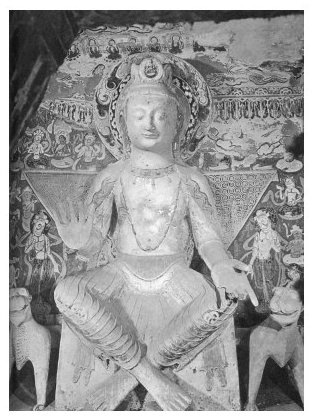
The right hand, as it is often the case with Buddhas and Bodhisattvas, is turned in the direction where the eyes of the statue are looking, i.e. at the spectator standing face-to-face, although the turn of the hand is not quite the same as in the Buddhist statues. We should only remark that if the turn of Lorenzo’s right hand completely corresponded to the Buddhist canon, the recognition of this statue as “Eastern” would hardly have waited until the publication of our book, and this would have become obvious to everyone long ago. He did depict the Buddhist mudra, known as the “mudra of knowledge,” in the turned-out hand of the statue. (Plate 7)
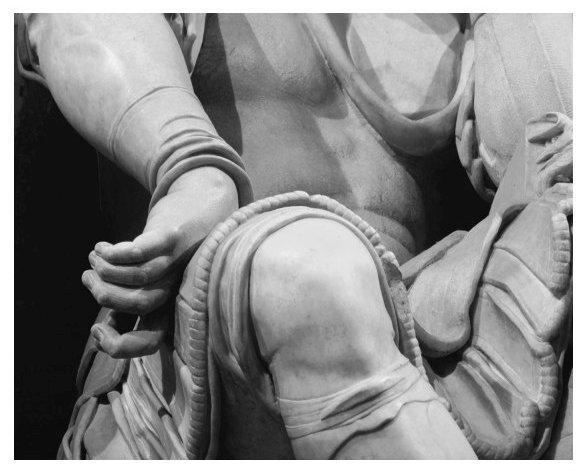
Of course, the genius of Michelangelo could have probably created all of this independently, as if steering the parallel course with the Hindu-Tibetan Buddhist tradition, but so many coincidences just cannot be accidental. His sculpture of Lorenzo impresses the European connoisseurs of Christian art with its meditative novelty, but over the last two or three thousand years any — even the most straightforward—Buddhist statues and figurines do express a quite similar spiritual concentration. Michelangelo simply could not avoid seeing them, because the “silk roads,” both centuries before and in his time, were busily importing Buddhist and Hindu artifacts into Western Europe. Of course, these rarities reached both the cultural capital of Italy – Florence, and the cultural capital of the Christian world – Rome. We also should not forget about the frequent Portuguese voyages to India, which already belonged to the ecumene of the Renaissance. In the memoirs of the Portuguese artist Francisco de Holanda, who was friends with Michelangelo, one can find that in their conversations they mentioned a well-known world stretching from Europe to the Ganges, that is, covering the entire territory of India. (Francisco de Holanda, Dialogues with Michelangelo, London, 2006.) Francisco de Holland in the presence of Michelangelo expresses the idea that a work of art, for example a picture, expresses thought better than words. The former cites the example of a resident of India who from a work of European art will understand the idea better than from a literary text. This philosophical concept, apparently, was then already known to many and, obviously, was easily perceived by the participants in the dialogues with Michelangelo (Francisco de Holanda, Op. Cit, pp. 82, 83). Therefore, Michelangelo, in his turn, could adopt the ideas drawn from various Hindu and Buddhist figurines and thangkas without becoming acquainted with any corresponding texts.
The word melancholy from ancient Greek times was associated with a weak nervous system and almost with mental illness – this erroneous idea had been cultivated by physicians until the 18th century, although Hippocrates had already included melancholics in one of the four varieties of normal people. The leader of the Florentine Platonic Academy Marsilio Ficino was convinced and could prove that melancholy engenders creative processes, being a reassuring vital force. This is well shown by Dürer in his engraving “Melancholia”: a man depicted by him holds a compasses in his hands, the eyes of the man are aflame with creative energy. In this sense, the melancholic nature of the statue of Lorenzo, about which so much had already been said in the literature, remains beyond any doubt. But European thought at that time did not know the concept of “meditation,” meaning an elevated thoughtfulness: a state in which one must immerse himself in order to attain nirvana – inner harmony, peace, deliverance from suffering, – this practice had been known in India from the time of the “Mahabharata,” i.e. no later than the 11th century BC. The depiction of Buddhas and Bodhisattvas immersed in this state has been the main goal of Buddhist art for almost two millennia. The distinction in a work of art between a common meditation and an immersion in the state equivalent to nirvana in this case depends not only on skill, but primarily on the empathy of the author, on his penetration into the visual philosophical idea of higher spirituality. This is a philosophy in stone.
The “divinity” of the personality and creativity of Buonarroti is important here for the topic of Michelangelo as a philosopher. And not just a philosopher – a visual exponent of other people’s ideas, including the ideas of Neoplatonism, as many still believe, but a truly independent thinker. Rafael learned from Michelangelo in absentia, but in Rome at the beginning of the 16th century they already met as rivals. Supported by Bramante, Rafael even tried to “take over” from Michelangelo the painting commission for the Sistine Chapel. It is to Rafael that the rough, but probably true, phrase about Michelangelo belongs: “[He is] lonely like an executioner.” The rivalry between them for commissions from the Vatican continued under the Pope Julius II and Pope Leo X (the latter came from the Medici family and remembered Michelangelo from his childhood as a young sculptor sitting at the Medici table). In 1508-1511, Rafael painted the famous fresco “Philosophy” (more often known as “The School of Athens”). In the foreground, he portrayed Michelangelo in the image of Heraclitus, the famous founder of dialectics. Probably we may also see a figure of Michelangelo in the foreground of another fresco of Rafael’s – “Disputa”.
The Florentine poet Francesco Berni, a contemporary of Buonarroti, wrote in 1533—exactly the time of work on the Medici Chapel — that Michelangelo was comparable with Plato in greatness, but was expressing his thoughts not in words, but in visual objects (cose visibili). Berni, as well as Condivi, reported on some philosophical texts of Michelangelo that clearly were not part of the latter’s poetry. No philosophical prose works of the master have survived, but maybe they did exist.
The Russian art researcher and translator Abram Efros, writing about Michelangelo’s “philosophical poems,” argues that “Michelangelo utilizes not a prefabricated and rigid system of views, taken from somebody else’s hands, but rather a live process of passionate and inquiring understanding of reality and of relationships with people and the world.” (Michelangelo Buonarroti, Poems and Letters. St. Petersburg, 1999, p. 240, in Russian.) In order to be aware of Michelangelo as a philosopher corresponding to the above evaluations we simply need to assume that he could create a philosophical work in the form of sculpture, without any oral or written comments or any further explanations.
Michelangelo created illustrations not to other people’s texts, but to his own thoughts, and such “illustrations” gave rise to many texts, including philosophical ones, and the number of them is constantly growing in our time.
Ficino, with his Neoplatonic interpretations of the cults of Saturn and Zoroaster, somehow had to halt his spiritual voyage on the eastern borders of India: quite unlike Pico della Mirandola and Michelangelo who easily crossed these borders without any permit or visa. Moreover Buonarotti may did so not through the study of texts, but through visual perception of the high-quality artistic images of Hinduism and Buddhism. Even the two-thousand-year-old “thoughtful Bodhisattva” of about 90 cm in height (Figure 4) could travel with caravans along the “silk routes,” as well as a numerous smaller images might have reached Michelangelo’s Italy. Michelangelo understood the essence of meditation and nirvana and the essence of high spiritual ministration and understanding. He did so without studying any ancient texts and he embodied this essence in the famous statue of Lorenzo. European art before him did not know anything similar to this.
It is necessary to consider the entire body of evidence in favor of Oriental (Hindu and Buddhist) influence in the creation of the idea behind and the embodiment of the statue of Lorenzo (or, more correctly, on the tomb of Lorenzo).
Probably, the best ever description of the New Sacristy was given by James Hall:
“That Michelangelo was fascinated by the convention is evident from the New Sacristy at San Lorenzo (1519-34) a ‘total work of art’ involving architecture and sculpture. Although it remained unfinished at Michelangelo final departure from Florence for Rome in 1534, it is still the most ambitious sacra conversazione ever created. The project included the provision of tombs for four male members of the Medici family in a purpose-built chapel. For the first time, a polyphonic, three-dimensional dialogue was created between sculpted figures and human beigns situated on all four sides of a chapel. As such, it had a huge influence on the development of the baroque tomb, and in more general way could be said to prophesy modern installation art. The protagonists are deceased members of the Medici family, saints, nude allegorical figures, a breast-feeding Madonna lactans, as well as “live” officiating priests and visitors. Light, too, plays an important role… It is wonderfully lugubrious dialogue of the dead and the living, marble and flesh, light and dark… The new Sacristy is a deeply paradoxical and mysterious work. Through the chapel, access and interaction are simultaneously offered and denied… The paradoxes in the New Sacristy have a deeper purpose and are motivated by new religious and political ideals. The whole effect was not systematically worked out from the start, as Michelangelo made costant revision during the design process. Nonetheless, in the New Sacristy sculptures he undoubtedly imbued the human body with an expressivity that is not just new and strange, but intensely topical.” (James Hall, Michelangelo and Reinvention of the Human Body. London, 2005, pp. 139, 140).
In the posthumous creation of a great tomb, not the least important role is played by the person for whom it made. Strictly speaking, there are only two truly great people presented in the New Sacristy of the Medici Chapel: Lorenzo Medici the Magnificent (1449-1492) and Michelangelo Buonarroti, the creator of the New Sacristy. The others buried there matter only as members of the Medici family. Giuliano, brother of Lorenzo the Magnificent (1453-1478), although illuminated by the glory of the latter and the sorrow for his own tragic death, failed to distinguish himself by anything special on his own, other than fathering Giulio Medici, the future Pope Clement VII (1478-1534). The Duke Giuliano de’ Medici (1479-1516) was the son of Lorenzo the Magnificent and left no significant mark in history. The grandson of Lorenzo the Magnificent, Duke Lorenzo de’ Medici (1492-1519) was a poor ruler and unsuccessful military commander.
In his turn, Lorenzo de’ Medici the Magnificent was not only a patron of art in Florence, a member and the guardian of the Florentine Platonic Academy, a good poet and an outstanding political figure, but in fact he was the godfather of Michelangelo. Lorenzo took Michelangelo to his house at a young age, seated the boy at his family table among two Roman Popes-to-be, admitted him to discussions of the most famous modern philosophers, and gave him an opportunity to study sculpture.
The formality required to informally name the sculptures on the tombs of the Dukes in their honor, which may be (still quastionable) was done by sculptor to statue traditionally called “the Duke Giuliano”. He never named another opposite statue. The name of statue “Lorenzo Duke of Urbino” appeared later without Michelangelo participation in Vasari’s description of the New Sacristy. Francisco de Holanda, addressing Vittoria Colonna in the presence of Michelangelo during their conversation in 1538, admires the works of the sculptor in the Medici Chapel, mentioning Night, Dawn and the “especially likable” sculpture of the “melancholy Death in Life.” (Francisco de Holanda, Dialogues with Michelangelo. London, 2006, p. 70.) What was the “melancholy” statue Francisco de Holanda had in mind, mentioning its name as something obviously understandable in the presence of the artist? Michelangelo himself used the names “Day,” “Night,” “Duke Giuliano” in his famous poem, but nothing is known about his own names he gave to the statues on the opposite side of the New Sacristy. At the same time, according to his description, provided to Condivi, the sculptures of the Medici Chapel are all interconnected, but they reflect different ideas.
Lorenzo statue is the only clearly melancholic where. For every contemporary who still remembered the incompetent and slow-witted Duke Lorenzo it was crystal clear that the most beautiful image of a highly spiritual man lost in deep thought had absolutely nothing to do with him. It was the ruler — both a philosopher (Plato’s dream) and a talented poet—Lorenzo the Magnificent who in spirit perfectly corresponded to the image of Il Pensiero. But he was in life by no means a handsome man, either. That is, the statue with the symbolic name of “Lorenzo” (named later by other people as Vasari) was a priori not intended by Michelangelo to bear any portrait resemblance. (Plates 22, 24) “There is no evidence to produce a precise identification of the dukes, and what there is came after Michelangelo’s death: even the sonnet that links Guliano to allegories of night and day came from much later period and so there could easily have been confusion over the correspondences, without weakening the iconographic associations of the tombs. Having established the symbolic reasons that drove Michelangelo to perceive those figures, we still have not resolved the question of the iconography of the sculptures, which are themselves something entirely new in the Western tradition… Michelangelo had produced the most vital of his works.” (Antonio Forcellino, Michelangelo: A Tormented Life. Cambridge, 2005, pp. 176, 178.)
 |
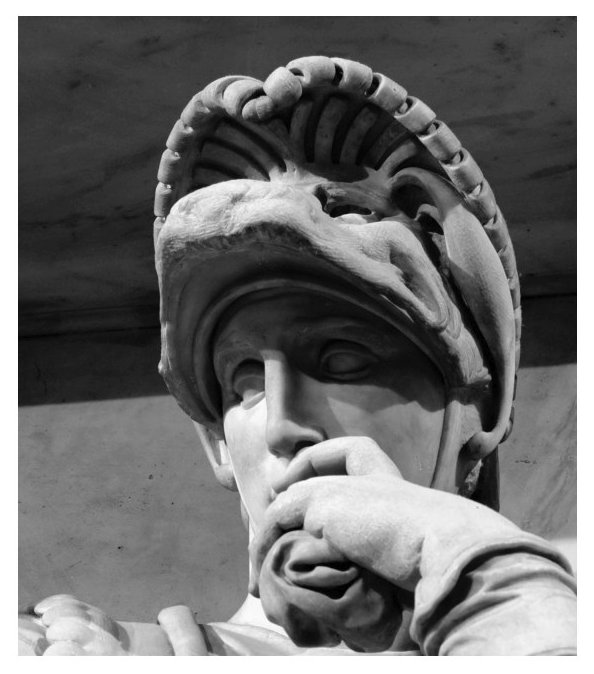 |
Both Panofsky and de Tolnay agree that “the Tomb of the Magnifici remained unexecuted.” Colonel G.F. Young wrote in 1910: “Lorenzo the Magnificient has been acknowledged by the united voice of Europe to have been one of the most remarkable men who ever held the rule of State… He was a leader in an age which abounded with great men. And he has been recognized as being one of the chief inspiring forces of the fifteenth century… It is, however, strange to record that no monument marks the grave of the great Lorenzo the Magnificient… Michelangelo was to have executed a monument for his tomb, but left Florence without doing so…” (Col. G.F. Young, The Medici. New York, 1930, p. 222.) He also quoted Edward Armstrong who in his book about Lorenzo wrote: “Florence has not repaid the generous recognition to Lorenzo…” (G.F. Young, Op.Cit, p. 223.)
What is really strange is that two “fans” of Lorenzo may think Michelangelo cared about the memory of his godfather less than they did. He who until his last day cared about his “difficult” father Lodovico who tried to deflect his son Michelangelo from art in his decisive young years. It is impossible to think that having almost 15 years for the Medici tombs in the New Sacristy he would have departed from Florence without leaving there a monument to Lorenzo. Irving Stone, less self-confident than a majority of art historians, put not own but Michelangelo’s thoughts first. He in his novel The Agony and the Ecstasy (1961) vividly portrayed Michelangelo who, after fourteen years of work and before leaving for Rome, examines the Chapel and comes to the conclusion that to him it looks finished, for he has expressed in it everything he wanted. Saying so, the sculptor uses just one idea as the criterion for such a conclusion: Lorenzo the Magnificent would have been pleased with the Chapel the way Michelangelo created it. James Beck writes that the statues of the New Sacristy are a triumph of the sculptor, even though all of them are partly unfinished. (James Beck, Antonio Paolucci, Francesco Santi, Michelangelo: The Medici Chapel. London, 1994, p. 23.)
The presence of the ashes of Lorenzo the Magnificent in the Medici Chapel instantly negates all those “socialist revolutionary” suppositions that, in the meaning of the New Sacristy, Michelangelo ostensibly expressed his protest against the Medici family. (Among the authors who shared this wrong conviction were Romain Rolland, and several others.) As a matter of fact, the creation of the New Sacristy was the only opportunity for the master to pay tribute to his great patron. Fate allocated him almost 15 years for this task, which was more than enough time. I think it was absolutely necessary for Michelangelo to immortalize the Magnificent in such a highly stylized statue as well as made all the New Sacristy as a mausoleum for Lorenzo the Magnificent.
Previously, following the opinion of James Beck, I believed that, based on the above considerations, it was necessary to consider the statue on the tomb of Duke Lorenzo actually as an idealized monument to his grandfather – Lorenzo the Magnificent. But now I would like to extend this idea over the entire New Sacristy – by the analogy with James Beck’s idea concerning the Cathedral of San Lorenzo cathedral as a giant mausoleum of Cosimo de’ Medici the Elder, the grandfather of Lorenzo the Magnificent. It seems to me now that the New Sacristy of the Medici Chapel is a giant mausoleum for the Magnificent and the statue of Lorenzo, the highest of them all, in fact dominates its entire space.
The statue of Guiliano, for instance, does not “participate” in the New Sacristy at all. Guiliano, having turned his face away from the altar, looks at the wall of his niche and the wall of the Sacristy just above the entrance from the Cathedral of San Lorenzo. He definitely does not belong in here. But the statue of Lorenzo “participates” in everything and holds all things together. (This is difficult to realize at first sight because usually everybody’s attention concentrates on the female statues positioned below).
Michelangelo himself determined the content of the New Sacristy, and therefore, when the question of a shrine for the then Pope Clement VII (Giulio de’ Medici) became irrelevant, Michelangelo could dedicate the entire Chapel to his patron, with the formal observance of the memory of the other three members of the family, especially the father of Clement VII – Giuliano. This formality required informally naming the sculptures on the tombs of the Dukes in their honor, which was done. For every contemporary who still remembered the incompetent and stupid Duke Lorenzo it was crystal clear that the most beautiful image of a highly spiritual man lost in deep thought had absolutely nothing to do with him. The philosopher and poet Lorenzo the Magnificent in spirit perfectly corresponded to the image of Il Pensieroso but in life was by no means a handsome man, either. As we mentioned before, the statue with the symbolic name of “Lorenzo” was not intended by Michelangelo to bear any portrait resemblance.
The question of incompleteness of some elements in the Medici Chapel does not apply to the statue of Lorenzo that we are discussing, since it was placed in its niche by Michelangelo himself before his final departure from Florence in 1534, and therefore was considered by the master to be completely finished. It seems to me that the incompleteness of the statues in the New Sacristy, purely accidental by nature, had in fact only improved Michelangelo’s original design, featuring additional statues of river gods, “crouching boys,” and others.
The intervention of Life, or, rather, God, infuses the recognized works of the Medici Chapel with even more “divinity.” After all, the words about their divinity that were dictated by Condivi had first been said by Michelangelo himself. It is as if God in this case becomes both a co-author of the Medici Chapel and its participant. The unpolished marble of Madonna’s face, the completely unworked face of the statue of “Day” (or maybe the latter was intended to be the face of God himself or the face of the “Day of the Last Judgment,” as James Hall argued) do not weaken, but rather strengthen the magic of the New Sacristy. For Michelangelo it was customary to portray God since the time of his frescoes on the ceiling of the Sistine Chapel. In his poems Michelangelo often addressed himself directly to God.
Panofsky mentions it in his book Studies in Iconology (1939), and he returns to the mouse once again (shortly before his death) in a scholarly paper entitled “The Mouse that Michelangelo Failed to Carve” (see in Essays in Memory of Karl Lehmann, N.Y., 1964, p. 243). In this article he writes:
Whatever esoteric meanings may be attached to Michelangelo’s Four Times of Day in the Medici Chapel, certain it is that their direct or overt purpose was to symbolize the destructive power of Time. This we learn from two unimpeachable sources: a few lines jotted down by Michelangelo himself, presumably in 1523; and a statement in his biography published in 1553 by his faithful disciple, Ascanio Condivi, and largely based on his own recollections.
The Michelangelo fragment reads — or, rather, begins — as follows: “Day and Night speak and say: with our swift course we have led Duke Giuliano to his death.” Condivi gives the following description: “The statues are four in number, placed in a sacristy... the sarcophagi are placed before the side walls, and on the lids of each there recline two big figures, larger than life, to wit, a man and a woman; they signify Day and Night and, in conjunction, Time which devours all things.”
Apart from the absence of the personal reference to Giuliano de’Medici, Condivi’s statement parallels Michelangelo’s own: in both cases only Day and Night are mentioned as the operative manifestations of all-destructive Time, while Dawn and Dusk (though alluded to in Condivi’s “ the figures are four in number”) are not mentioned by name. But Condivi has more to tell. “And so that this his purpose might be better understood,” he continues, “he added to the [figure of] Night, appearing in the guise of a woman of admirable beauty, the owl and other symbols concordant therewith, and likewise to the [figure of] Day its [appropriate] attributes.
And in order to signify Time he planned to make a mouse, having left a bit of marble upon the work (which [plan] he subsequently did not carry out because he was prevented by circumstances),because this little animal ceaselessly gnaws and consumes just as time devours everything.”
Condivi, having no first-hand knowledge of the Medici Chapel, committed a slight inaccuracy in speaking of the “ attributes” (note) of the figure of Day which has no attributes at all; nor is he quite clear as to the exact location of the “bit of marble” which Michelangelo is said to have reserved for the mouse. It is, however, just this absence of first-hand knowledge which lends credibility to what he tells us about the Master’s intentions: had he visited the Medici Chapel he — or a guide — might have invented the mouse in order to account for the little "bits” of uncarved stone. As it is, we have a right to assume that he repeats what he was told by Michelangelo. The idea that human life is brought nearer to its close with every night and every day, combined with the thought that small rodents may be employed as symbols of all-consuming Time (and, therefore, all-consuming Death), brings to mind one of the best-known and most impressive attempts to describe la condition humaine in the guise of a parable. Told by Barlaam, the wise old sage, to Josaphat, the beautiful young prince, this parable — formerly attributed to John of Damascus — compares the behavior of most human beings to that of a man who, pursued by a mad unicorn, climbs a tree where he believes himself to be safe.
Looking down, he perceives two mice (in later versions often replaced by “rats” or simply by “little beasts”), one – black, the other – white, which continuously gnaw at the base of the tree and have gone far with their destructive work. Still farther down, he sees a horrid dragon, observing him with greedy eyes and opening its mouth in anticipation. Four asps lurking in the masonry beneath the tree intensify his fright. Looking up, on the other hand, he realizes that the tree distills sweet honey (μέλι, in the later versions mostly replaced by “fruit”). So he foolishly delights in the sweetness of the world (symbolized by the tree), forgetting death (symbolized by the unicorn), the “terrible maws of Hell” (symbolized by the dragon), and the instability of the elements (symbolized by the four asps). Oblivious of all this — and particularly of the two mice which stand for Day and Night, each of them bringing him nearer to death — he entirely abandons himself to the thoughtless enjoyment of life.
Though artistic representations of this engaging tale are more frequent in the Northern countries than in Italy, they are by no means absent from the Italian scene, the best-known example being Benedetto Antelami’s south portal of the Baptistry at Parma; even in Michelangelo’s Florence the story was popular enough to be alluded to in a Triumph of Time attributed to Jacopo del Sellaio (d. 1493), where two little beasts, one white, one black, are seen gnawing, instead of the tree, the support of a sundial on top of which the figure of Father Time is perched.
Yet we have reasons to doubt that the Barlaam and Josaphat story was uppermost in Michelangelo’s mind when he conceived the mouse. From his point of view a medieval morality— which, so far as I know, had never invaded the sphere of funerary sculpture in Italy would hardly have been a respectable source. And where this morality introduces the two little rodents as specific symbols of Day and Night and conveys the general concept of Time or Death by a huge monster, originally a unicorn, Michelangelo expresses the ideas of Day and Night by over-life-sized human figures while making his little mouse the one and only representative of “all-devouring Time.” He must have had a classical source, or sources, in which the mouse appears as the destructive principle per se, and preferably within a funerary context.
Looking about for sources of this kind, and turning first to texts, we are not surprised to find that the image of the mouse, like nearly all symbols, can carry many different meanings. The name of the small, cuddly and graceful animal was used as a term of endearment in Latin as it is in most modern languages, and on the modest memorial plaque of a girl named Rara in the cemetery of Priscilla at Rome the name of the dead girl is followed by a tiny mouse apparently indicating an affectionate nickname (signum): “Ilara, quae et mus.” White mice — though only white mice— were considered as favorable omens (for mice were considered μαντικώτατοι των ϋφων); there were those who derived the word “mysteries” from μϋς; and tame mice were permitted to nest beneath the altar of Apollo Smintheus (or Sminthios) . The Egyptian Priest-King Sethos erected a statue to Hephaestus, which showed the god carryinga mouse and exhibited the inscription: “Learn from me how to be pious and worshipful”), because Hephaestus had saved the Egyptians from an invading Assyrian army by sending innumerable mice who devoured the enemy’s bows and shield straps as well as all other leather equipment. And a well-known fable tells us of the little mouse who, spared by a hungry lion, later on saved the latter’s life by gnawing through the net into which he had fallen.
These favorable implications of the mouse are, however, only the positive aspect of its basically weird and harmful qualities: its swift and stealthy movement; its nocturnal and subterranean way of life; and, above all, its illimited power of destruction. Mice were kept not only in the Temple of Apollo Smintheus but also in that of Nephtys, the Egyptian goddess of Night. Athena hated them because they, greedy and fond of darkness, damaged the garlands in her temples and broke the lamps, lapping up the oil. And Scopas’ cult image of the same Apollo Smintheus who tolerated mice beneath his altar, showed him with a mouse at his feet. This motif, we are told, was meant to glorify the subdual of the mice’s “conspiracy” against the crops of the region or, according to another version, to commemorate the founding of the town of Hamaxitus by Cretan refugees who, like the foes of Sethos, found their weapons ruined by mice but saw therein the fulfillment of a Delphic Oracle which had enjoined them to found their new city “where ‘the earth-born’ (οί γηγενείς) would make war against them.”
In art the interpretations of the mouse are, if anything, even more various than in the literary sources; but here, too, the sinister aspect of the little rodent prevails. Apart from tiny works of sculpture-in-the-round, which seem to be pure genre, and such facetious scenes as a weighing contest between a mouse and an elephant, we find the mouse either as a special, uniquely determined attribute — as in Archelaus of Priene’s Apotheosis of Homer in the British Museum, where a mouse, paired with a frog, appears at the feet of the hero in order to designate him as the author of the Batrachomyomachia — or as a symbol of destructiveness. By implication, this is true even of the mouse connected with Apollo Smintheus; explicitly, it applies to countless other representations ranging from the humorous to the macabre.
Mice appear in renderings of the Plague of Ashdod from thirteenth-century Bibles to Poussin and beyond. A rapacious mouse is threatened and cursed by a twelfth-century scribe named Hildebertus. In an anonymous Dutch vanitas still-life of 1538 a mouse devouring a cheese complements the well-known symbolism of the snuffed-out candle. And from the seventeenth century at the latest we find a constant association between the mouse and the Death’s head.
Only a few years ago the specifically sepulchral implications of the mouse in classical art were confirmed by its repeated appearance in the pictorial decoration of Etruscan tombs. And this brings us back to our point of departure: the mouse projected but not carried out by Michelangelo.
Second, for purely iconographical reasons the derivation of the head from an Etruscan Hades is “hard to deny” and, therefore, presupposes Michelangelo’s acquaintance, either direct or with Etruscan tomb painting. Third, while the head in the drawing agrees with that in the tomb at Corneto-Tarquinia in that it is turned to the left, it agrees with that in the tomb at Orvieto-Volsinii in such specific details as the comparatively small eyes of the wolf’s mask and, above all, the “wind-swept” appearance of its hair. We may perhaps infer that Michelangelo worked from an original different from both and no longer available to us.
Be that as it may, Michelangelo would seem to have had access to, and taken an interest in, the decoration of Etruscan tombs. An Etruscan tomb near Florence, still in existence, exhibits visitors’ graffiti dating as early as 1495 and 1507; other Etruscan tombs were robbed from as early as ca. 1400; and numerous Etruscan wall paintings were recorded in the sixteenth and seventeenth centuries though they have now disappeared.
The gable of the very entrance wall of a tomb of ca. 525-520 BC—the Tomba delle Olimpiadi in Corneto-Tarquinia — shows, with the grizzly obfuscation of the borderline between life and death so characteristic of Etruscan art, the reclining figure of a nude man (painted red) attended by no less than three mice painted a bluish gray: one nestling in the small of his back and apparently nuzzling (or nibbling at) him while he looks round towards it; one near his left shoulder; and a third playing about in the vicinity of the arm on which he supports himself. And in a tomb not as yet published and provisionally nicknamed “La Tomba del Topolino” (the little “Mickey-Mouse”), here unconnected with any human figure, stands guard near the left-hand doorpost of the front wall – a “Grabmaus” tout court and par excellence.
Michelangelo’s mouse, had it ever been realized, would thus have had a most distinguished and diversified ancestry; but just for this reason it is difficult to say precisely which of the elements of the tradition was present in the artist’s mind when he decided to embellish the Tomb of Giuliano de’ Medici with a mouse. That he was familiar with the Barlaam and Josaphat story is more than probable.
But it may well be that literary reminiscences like these would not have caused Michelangelo to include a mouse in the program of Giuliano’s Tomb had he not met the little animal in an actual image, and this in an Etruscan tomb— a place not only hallowed by its classic, even specifically “Tuscan,” associations but also analogous in purpose to the Medici Chapel. If this hypothesis were admitted the case of the mouse which Michelangelo had planned to immortalize by his chisel would have paralleled that of the wolf-helmeted Hades whom he recorded with his pen.
In 1931 Panofsky, a visiting professor at New York University, presented a lecture course entitled “Albrecht Dürer as Artist and Thinker”. But he as well as others never gave Michelangelo a title “The Thinker”. This is probably a common systematic problem with understanding of intentions of Buonarotti in his art. The only known to us exemption is the book of modern famous art historian Mons. Timothy Verdon “Michelangelo Teologo”.
Also, it is important to understand the reasons for the possible error by Panofsky in coming to the conclusion that the master’s conception of portraying a mouse in the Medici Chapel as a symbol of all-devouring Time is improbable.
Such topics are discussed in the modern “Michelangelology” not too often. At the same time, the author considers himself indebted to bring sufficient arguments in order to raise the above issues for a discussion by specialists, since they require a holistic approach and further detailed development.
During a trip to Nepal in 2006, taken with his friends — the vice-presidents of the Moscow Florentine Society Alexander Zakharov and Sergei Shiyan — the author accidentally saw a statuette of the God Ganesha whose posture looked surprisingly similar to that of the statue of Lorenzo – with a mouse placed under Ganesha’s hand. The results of that discovery can be seen in the texts of our books: P. Barenboim, A. Zakharov, The Mouse of the Medici and Michelangelo. M., 2006 (in Russian); Peter Barenboim, Michelangelo Drawings – A Key to the Medici Chapel Interpretation, Moscow, 2006 (in English); Peter Barenboim, Sergei Shiyan, Michelangelo in the Medici Chapel: Genius in the Details. M., 2011-2018 (in Russian & English).
It is important to note that the full meaning of the mouse symbol in European civilization in the times of Michelangelo was not entirely clear.
In 1950, several researchers from the University of Ghent (Belgium) published a monograph on the symbolism of the mouse and came to the conclusion that this symbolism had come to Europe from the East through Greece and was originally associated with the ancient Hindu mythology. The book contains a photo of an ancient coin where the Greek god Dionysus stands on a mouse – the iconography that coincides with many popular depictions of the Hindu god Ganesha. (Henri Gregoire, R. Goossens, M. Mathie, Asklepios Apollon Smintheus et Rudra. Bruxelles, 1950.
Unfortunately, these Flemish scholars from Ghent were unfamiliar with Maximilian Voloshin’s in-depth intuitive literary and philosophical analysis of the mouse symbolism, nor did they have an opportunity to see a tapestry made at the end of the 15th century in the neighboring city of Bruges. This tapestry depicts a symbolic scene of the transfer of the titles of the Count of Flanders and the Duke of Burgundy from Mary of York to her son Philip. Thereon, the symbol of ducal power over Burgundy was represented by a helmet with a plumage and a stuffed mouse. (Plate 9) The latter appears to be wonderfully similar to the bat on the “Melancholy” – a famous engraving by Albrecht Dürer. (Plate 10) This tapestry has been residing in the Spanish Escorial for over 500 years now. Duke Philip of Burgundy, who had ruled as King of Castile in 1504-1506, had taken his collection of Flemish tapestries along. Until now, the tapestry in question has not yet become a subject of study by art researchers and has not even been cataloged. We would call the mouse on this tapestry – “the most mysterious mouse in Europe.”
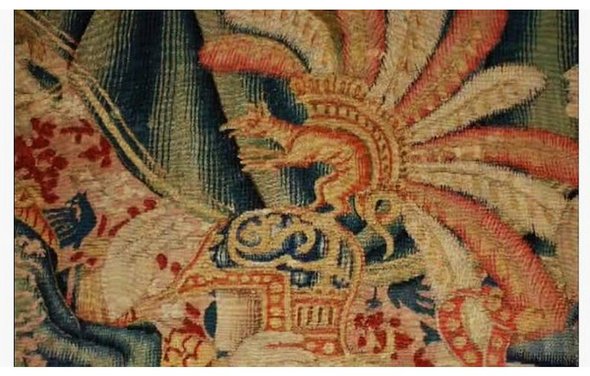 |
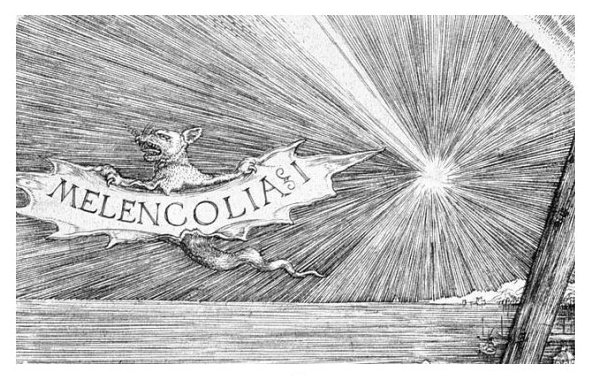 |
Probably, in the times of Michelangelo the mouse was an important symbol not only for the East, but also for European civilization, the traces of which have so far been lost in history.
Erwin Panofsky once compared the mouse symbol to the image of time. In his book Studies in Iconology, Panofsky writes about the work of Jacopo del Sellaio (1442-1493), dedicated to the Roman god Saturn, “showing new and somewhat unusual attributes... two rats — one black and the other white — to symbolize the destruction of life throughout the day and night. This motif seems to have “made it into the Western world together with the story of Sts. Barlaam and Josaphat.” At the same time, Chronos-Saturn is “a half-Occidental and half-Oriental figure, illustrating both the abstract grandeur of the philosophical principle and the harmful gluttony of the destroyer demon...” (Erwin Panofsky, Studies in Iconology. SPb, 2009, pp. 135, 136, 156.) This “half-Oriental” origin was overlooked by Panofsky in the sculpture of Lorenzo where, as Panofsky argued, Michelangelo had portrayed the Roman god Saturn. Mice, as a symbol of all-devouring Time in the painting by Sellaio, were considered by Panofsky to be “a new and unusual attribute,” while hardly any importance at all was attached to their obvious monstrosity: each was depicted the size of a large dog. (Plate 21)
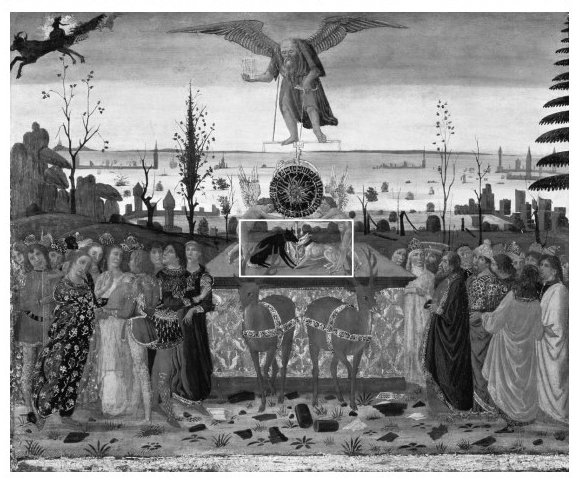
It seems to us that “the mouse”, as conceived by the master, is present in the Medici Chapel to help people understand the meaning embedded in the statue of Lorenzo which is not located on the side of the New Sacristy where Panofsky was looking for the mouse.
But first let us mention the source of knowledge concerning the concept of the mouse, dating back to the period of Michelangelo’s life and referring to Michelangelo himself.
Condivi wrote:
“These four statues are placed in the sacristy specially built for them and located on the left side of the church, in front of the old sacristy. Despite the fact that these statues have the same size and allegedly serve one idea, they are all different: both in their movements and their poses. The tombs are placed near the side walls of the chapel; on their lids are reposing two figures somewhat larger-than-life, representing a man and a woman. One of them personifies Day, the other – Night, and together they symbolize Time. For greater clarity, Michelangelo added to the figure of Night (made in the form of a woman of extraordinary beauty) an owl and other nocturnal emblems; and to the figure of Day, he added the emblems of the day. Michelangelo had intended (it was left unfulfilled because he was recalled from this commission) for the image of the Night to carve a marble mouse on one of the tombs and for this purpose he left a small marble elevation. He found that the mouse was as all-gnawing and all-spoiling as the all-destroying Time.”
Condivi himself did not see the Chapel and wrote all this in Rome from the words of Michelangelo. How sincere was the master with him and did he remember everything that well, almost two decades after his final departure from Florence? How correctly was the above passage translated, and how did Panofsky, who knew Italian, understand it?
In the original it reads:
E perchè tal suo proposito meglio fosse inteso, messe alla Notte, ch’ è fatta in forma di donna di maravigliosa bellezza, la civetta ed altri segni a ciò accomodati; così al Giorno le sue note; e per la signifìcazione del Tempo voleva fare un topo, avendo lasciato in sù l’opera un poco di marmo (il quale poi non fece, impedito), perciocchè tale animaluccio di continuo rode e cотsuma, non altrimenti chel Tempo ogni cosa divora.
The first mistake made by Panofsky in his translation: the mouse should be on the side of the Night and Day. Therefore, Panofsky was no longer looking for the mouse on the other side of the Chapel. Such a translation does not follow from the text in which there are no words “on the side of the Night and Day.” At the same time, Condivi says that the statue of the Night has its signs, including the owl, and the statue of the Day also has some of its signs, which in reality are not seen in the New Sacristy. Condivi does not limit the description of the Medici Chapel to the statues of the Night and Day. He wrote about “four statues” in total, but his text specifically mentions only three: Night, Day and the Madonna holding the Christ Child. Maybe he counted Baby Jesus as the fourth statue?
Condivi did not see the Chapel himself, so he described it approximately from the words of Michelangelo, who told him about the mouse and its symbolism, but did not take the trouble to describe other sculptures, although the statues of “those whose ashes were buried” were mentioned in the text, indicating that they were “more godlike than human.” Nor did Panofsky notice that on the marble near the statues of Night and Day there was no “bit of marble” to carve the future mouse from, but on the other side of the New Sacristy, under the left hand of the statue of Lorenzo we may see this “bit of marble” carved as a box with animal head. “The body of Lorenzo would collapse if his left elbow were not supported on the obolus-box… decorated with the head of bat, the bird of underworld.” (Charles de Tolnay, The Medici Chapel. Princeton University Press, 1948, p. 69.)
It is also important to note that Panofsky failed to accurately translate the reason for the absence of the mouse: “prevented.” Such a translation of the Italian words impede/impedito cannot be acknowledged as correct, nor is the widespread translation of this text into English by the word prevented, in the sense of “some hindering external circumstances”, correct. The correct translation would be “did not, could not find the time,” that is, “committed an independent action on his own volition,” but not “was prevented by some external circumstances.” Panofsky himself called this in English more correctly, by using the word failed, which in this case meant of “did not want to; abandoned,” i.e. by Michelangelo’s own independent decision.
The description of the Medici Chapel, provided by Condivi, is chaotic and incomplete, which is due to the fragmentary nature of the information he received. In addition, the question arises about Michelangelo’s level of trust: the master, after twenty years, still might not want to disclose to others his secret intentions in all their entirety. After all, he did not talk about half of the statues in the New Sacristy, including the statue of Lorenzo. Maybe Michelangelo, is speaking of the statues of Night and Day, said that he originally wanted to place the mouse there, but did not do it. As for the conversation about the other side of the Chapel, they did not even arrived at having such a conversation. Perhaps, his story got somehow crumpled, and they did not return to this topic anymore. Maybe at first he wanted to portray just a usual mouse, but then abandoned the idea, having already created under the elbow of Lorenzo the image of some monstrous animal. Or he could forget something, reaching after two decades a venerable age of eighty.
Panofsky believes the Lorenzo statue serves as an image of the Roman god Saturn (Erwin Panofsky, Studies in Iconology, p. 334.) It is worth noticing that Panofsky overlooked the illustration that had been used by his teacher Aby Warburg (1866-1929) in several of his books, the one in which Saturn is depicted in a helmet decorated with sea shells (the same can be seen on the front of Lorenzo statue), and also holds on his left arm a small monster (Plate 25) that symbolizes all-devouring Time (Aby Warburg, The Great Transmigration of Images. SPb, 2008, pp. 257, 259). Probably, this could have spurred Panofsky to compare it with the statue of Lorenzo and correctly attribute the animal’s image on the casket as the symbol of all-devouring Time. He wrote: “It seems to me — and not only to me — that the characteristic features of the animal head (which is rather a mascaron than a naturalistic portrait) in this sculpture by Michelangelo suggest, in all likelihood, rather a bat than a lynx.” (Studies in Iconology, p. 16.)
It seems that had Panofsky compared the statue of Lorenzo to the illustration of Warburg, he may have found the required symbolism, and with it – the “mouse” (in a broad sense) which — after the original publication of his Studies in Iconology in 1939—he returned to in 1962 and 1967, in addition to a separate paper on it written by him in 1964.
It seems to me that — for such a deeply Christian thinker as was Michelangelo—Saturn, the primitive ancient deity, known to eat his own children, could hardly have become the figure whose image Michelangelo would make a symbol expressing the greatness of his spiritual father and patron – Lorenzo the Magnificent. Saturn could not fit in with the high religious aesthetics of Michelangelo. In the New Sacristy, Michelangelo did everything himself, without bothering to explain it to anyone. He simply did not let the tyrant of Florence, the cruel Duke Alessandro de’ Medici (1511-1537), see the unfinished statues; and the twenty-year-old duke, like a little boy, had to climb into the Chapel through the window in the master’s absence. But Michelangelo inevitably had to report to his client – Pope Clement VII and to provide some ready answers to the Pope’s questions. Therefore, a possible reference to the god Saturn, remembered in the Neoplatonic interpretation as the father of the Golden Age and a contemplative secluded god, and not as the cruel devourer of his children, could serve for Michelangelo as an explanation that might satisfy the Pope. Clement VII probably wished to have associated with his nephew the young Duke Lorenzo legitimacy as a great military leader “in spite of the historical evidence to the contrary... Michelangelo for many years had petulantly repeated to popes and princes he wanted to bring round to his view...” (Antonio Forcellino, Op.cit., p. 178.)
Michelangelo preferred to mask such Eastern elements as those on the statue’s head and the Buddhist mudra formed by the fingers of Lorenzo’s right hand. After all, the Pope, who was born as Giulio de’ Medici and the son of the senior Guliano, who has also buried in the Chapel, was in spirit a Neoplatonist deep in his the soul. But a fight against “idols” of Buddist gods and saints was already on its way... Therefore, the “semi-Eastern” nature of this sculpture was duly encrypted and is not to immediately striking.
Once, having seen in Nepal a statuette of the God Ganesha, similar to the image of the statue of Lorenzo, the author of this book, just like Panofsky, got fixated on the mouse and built his entire previous argumentation on the similarity between the statue of Lorenzo and images of the Hindu and Buddhist gods Ganesha and Kubera. (Plate 12) Using the English Wikipedia reference to the Manichaean adaptation of the Hindu deity Ganesha into its fold and to the article, "Manichaean Art and Calligraphy" by Hans-Joachim Klimkeit, we may suppose that Michelangelo had chance a good to see the images of this god in Italy. We should not forget that the mouse is a part of almost all known images of Ganesha.
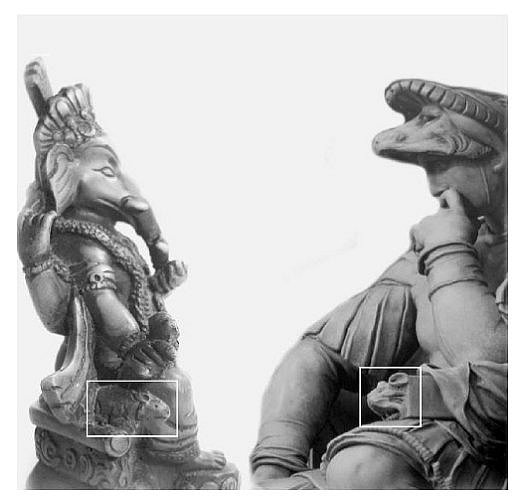
The correct approach to the animal from Dürer’s Melancholy could help Panofsky — who wrote an entire monograph on this engraving — to come up with the animal under the left elbow of Lorenzo. It does not resemble the usually repulsive muzzle of a bat, although the ears and the fold that rises between them create a certain similarity, but side-on — when viewed from below the altar side — it resembles the almost peaceful muzzle of a common mouse. One should pay attention to Condivi’s remark that Michelangelo knew the anatomy of animals perfectly – much better than the anatomy of humans. But even if one does not pay attention to the second grinning mouth, for the sake of justice, it should be said that, unlike the profile, the front of the face on the box under Lorenzo’s hand is not too similar to that of a common mouse.
Here, the author rather relied on the de facto traditional non-division between such animals as mouse and mongoose in the zoological knowledge of that time by referring to the images of these animals on the Raphael Loggia frescoes, seen both in the Vatican and the St. Petersburg Hermitage (Plate 15), and also by referring to the fact that these two animals often are not strictly distinguishable, as, for example, in the Tibetan-Buddhist tradition.
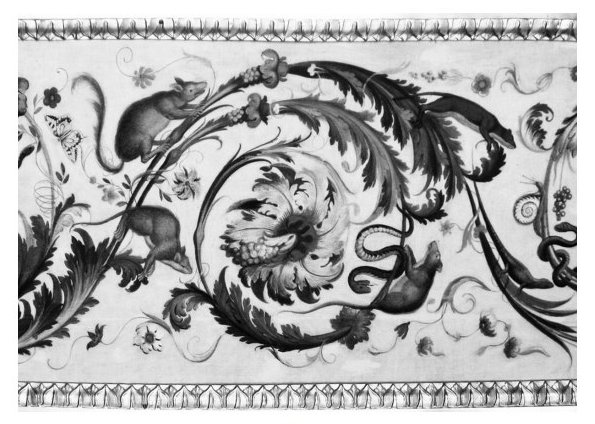
In addition, one could refer to the fact that in the most authoritative source before Alfred Edmund Brehm — the Aristotle treatise, called Historia animalium — several animals clearly belonging to other species are described as mice (Aristotle, The History of Animals, translated into Russian by V.P. Karpov and edited by B. A. Starostin, Moscow: Russian State Humanitarian University, 1996, p. 528.) For example, the mongoose and ichneumon (also known as Egyptian mongoose, or pharaoh rat) are not particularly distinguishable from the weasel and ferret, described by Aristotle. In this case, the weasel, honored in the tradition of Bhutan as a disgorger of precious stones, does not differ from the sacred mongoose, which is the attribute of the god of wealth Kubera (Michael Palin, Himalaya. London, 2004, p. 257). On the pediment of the Parma Baptistery, from the 12th century, the roots of the Tree of Life are enthusiastically gnawed by a mouse and either a mongoose or a weasel. (Plates 19, 20) At that time, the latter two were treated as the same animal.
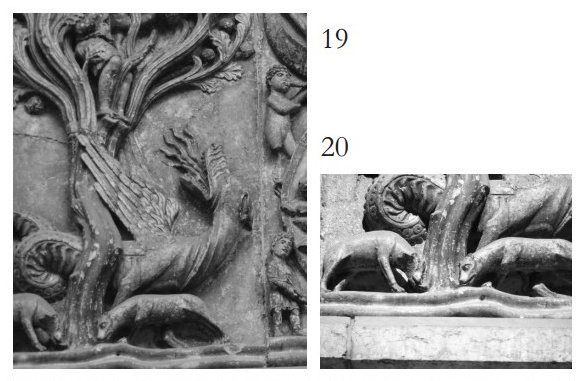
One can also recall the ancient Egyptian god Seth, sometimes correlated with Saturn. He is often portrayed with the head of an animal, either a dog or a donkey. The front part of Lorenzo’s helmet looks like the upper part of a skull, which can belong to either of these animals, although researchers more often consider it to be the jaw of a lion. Two things are important here: the strands of fur on the sides of the helmet are similar to the strands of fur on the sides of the face on the box. Equally intriguing are the ancient Egyptian sarcophagi of some mouse-like animals, very similar in shape to our box. (Plates 14, 16, 17)
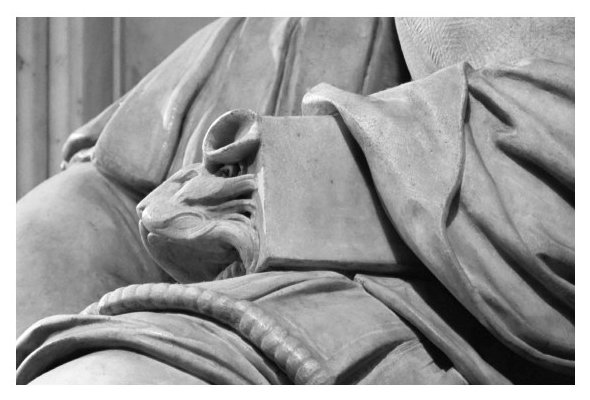
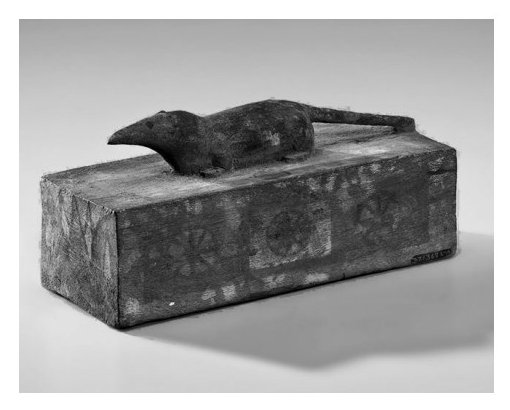
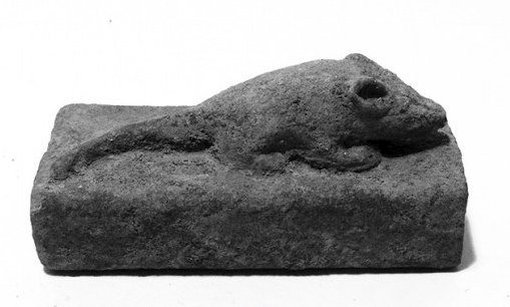
There exists yet another, quite unexpected version, belonging to the authoritative Florentine art researcher Cristina Acidini Luchinat who argues that the casket under the elbow of Lorenzo is, in fact, a beehive, depicted exactly the way it looked in the time of Michelangelo. She expressed this opinion in our private conversation and also in her book (Cristina Acidini Luchinat, Aurelio Amendola, Michelangelo the Sculptor. 2010). The weasel, according to Aristotle, is the robber of beehives. It is difficult to assess the validity of this version, since its author did not provide any additional evidence in its favor. However, it should be noted here that it was Christina Acidini who correctly determined that the wall pattern found in 1976 in a secret room under the New Sacristy was indeed a sketch of the feet of the statue of Giuliano, and not Lorenzo, as Charles Sala had mistakenly believed, and we followed him in this error. (Charles Sala, Michelangelo. Nederlandstalige editite, 2001, p. 128.)
If one turns one’s attention to the furry strands on the sides of the muzzle, belonging to the animal on the box, then one may recall that certain types of “mice” (in a broad sense of the word) and animals similar to them, such as mongooses, weasels, ermines, and ferrets, also have rather thick fur, as well as a nose and ears quite close in shape to those on the carved image.
Nevertheless, according to my current conviction, the comparison between the statues of Ganesha and Lorenzo, wherefrom our Oriental version had sprung in Nepal, presently does not hold water.
The elephant-headed god, with a trunk and all, god, which is so popular among both Gentoo and Buddhists, could not fit into the aesthetics of Michelangelo, since for the latter this god still was a “monster.” But the god of wealth Kubera (Vaishravana, Jambala), popular, among both Indian and Buddhist merchants with his gem-disgorging mongoose could well have become such a prototype. (Plates 5, 6)
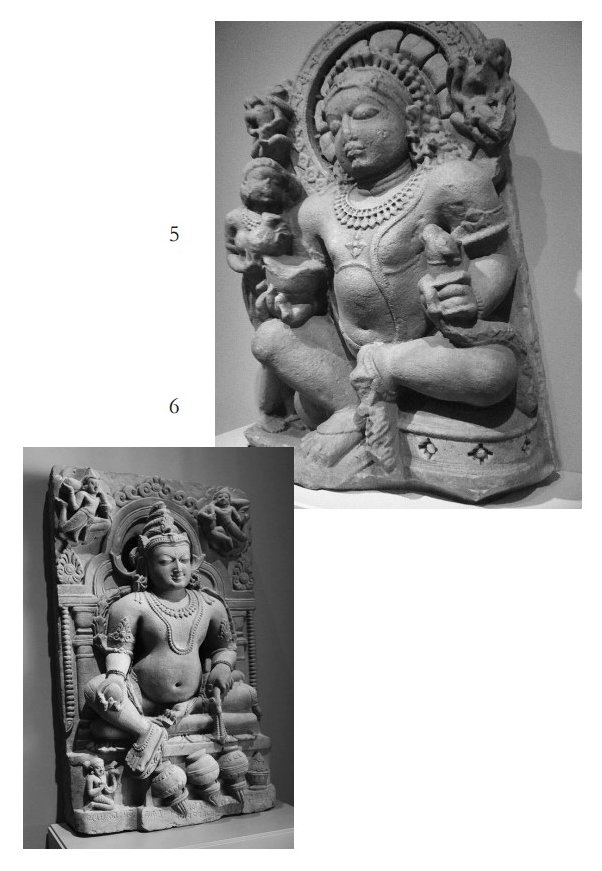
Some sculptures on the illustrations in this book date back to several centuries BC. Stuffed mongooses were used in the East as containers or purses from whose mouths coins or precious stones were squeezed out (Robert Beer, The Encyclopedia of Tibetan Symbols and Motifs. Chicago, 2004, p. 212). This coincides with the idea of a cash drawer, which presently is shared by most researchers, including Panofsky. In addition, one of the most important Bodhisattvas – Lokishwara is also sometimes portrayed with a small animal: a mouse or a mongoose (Madanjeet Singh, Himalayan Art. New York, 1968, p. 165).
One can recall the remark Antonio Paolucci made about the importance of photography for the perception of the details in the Medici Chapel. (James Beck, Antonio Paolucci, Bruno Santi, Michelangelo. The Medici Chapel. London, 1994, p. 9.) The animal image under the left hand of Lorenzo is located about three meters above the floor level. It looks like a big-eared Mickey Mouse to anyone who looks up from the level of normal human height. Such was its visual perception since the time of its creation and until quite recently, when the power of modern optics did finally allow to zoom it in and capture on still photos the second sharp-toothed mouth and head of this animal (or rather a monster with two mouths). Apparently, all this could not be seen by Panofsky either when visiting the Chapel or on the photographs made in his time. The first high-quality photo album dedicated to the Medici Chapel appeared only 25 years after Panofsky’s death. The lighting pattern in the New Sacristy even now does not allow us to examine the second mouth freely: all we see there is a mere shadow, both with the natural and electrical lighting, which comes from above and plunges Lorenzo’s eyes and the image of the second mouth — already belonging not to a mouse, but to a certain mouse-like monster — into the eternal shadow. The toothiness of this mouth quite naturally befits it as a symbol of all-consuming Time. Michelangelo showed this quite clearly, while hiding it from view for so many centuries. Even though Galileo Galilei the Tuscan invented his telescope 50 years after the death of Michelangelo, hardly anyone ever used it to describe the details in the Medici Chapel. The presence of the second mouth could not be found in any of the authoritative art researchers’ descriptions of the Chapel.
The second mouth turns our dear little mouse into an aggressive monster, well suited for the intended by Michelangelo symbol of all-devouring Time. In India, from times immemorial, the concept of Time as the main god was developed. It is the Eastern approaches that absolutely dominate this area. One can refer to the Hindu tradition of depicting Kali, the goddess of Time, with an open mouth – as a symbol of all-devouring Time, or the evil demons of Indian mythology – rakshas, devouring everything around and sometimes depicted with many mouths each. We will not continue to go along this well-researched road anymore. The rest can be easily found in numerous monographs and papers by experts in Oriental studies.
It is already ten years since the death of James Otis Hall (1912-2007), an amateur historian who — without being a professional scholar—de facto became a top authority in the interpretation of symbols in art. In 2005 he proposed an idea that instead of the mouse, the devourer of Time, Michelangelo portrayed in the New Sacristy the symbolism of all-devouring Time by placing on its walls grotesque masks, with their “hungry gaping mouths” (James Hall, Michelangelo and Reinvention of the Human Body. London, 2005, pр. 153, 162). As for the animal symbol (“a bat, or a lynx, or a monster”) on the money box, which actually stood in the center of Hall’s holistic interpretation of the New Sacristy as a hymn to the Medici family’s philanthropy, he attributed this symbol entirely to the distribution of money. For us, it is important to know that Hall did not for a single moment accept the possibility that Buonarroti throughout the 15 years of his work on the Chapel could — due to some external circumstances — fail to carry out in the Chapel his original intention to depict the symbol of all-devouring Time. It is quite another thing that Hall could find this symbolism only in the grotesque faces on its walls.
We may see on the Tibetan thangka from the Moscow’s State Museum of Oriental Art (made in the ancient style in the 19th century) a striking similarity of the central image of a monstrous head on the front of the figure of Vaiśravaṇa (Kubera, Jambala) with many (especially horned) images of grotesques mask on the walls, pillars, and altar’s decoration in the New Sacristy. But the most striking similarity is very visible between a combined head of Michelangelo’s “mouse” under the left hand of Lorenzo and a combined image of a living mangoose in the left hand of Vaisravana (Kubera) and painted grotesques mask on the front of Vaisravana’s dress. (Plate 26)
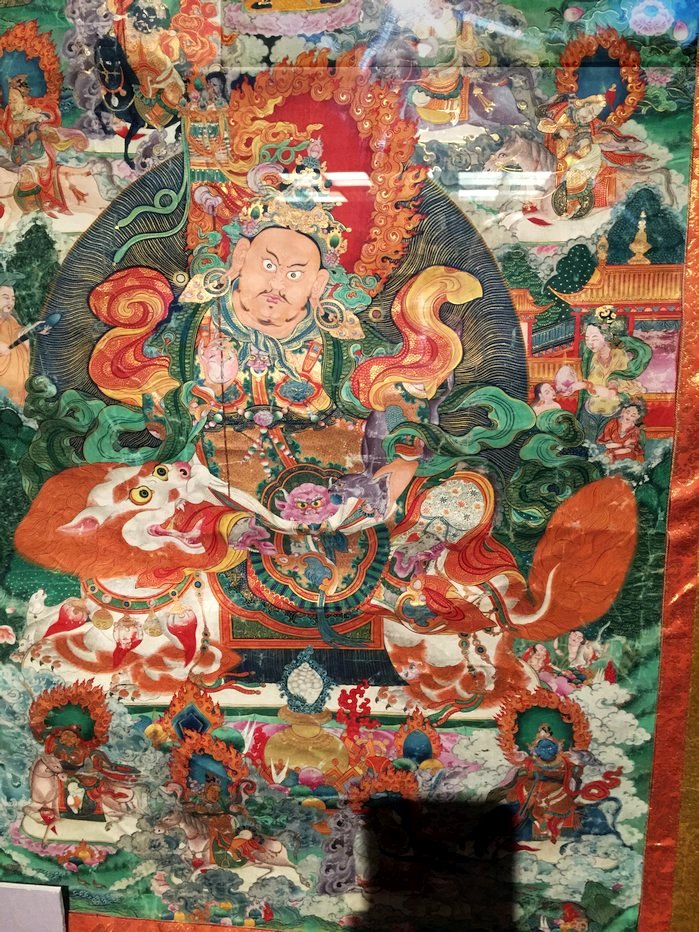
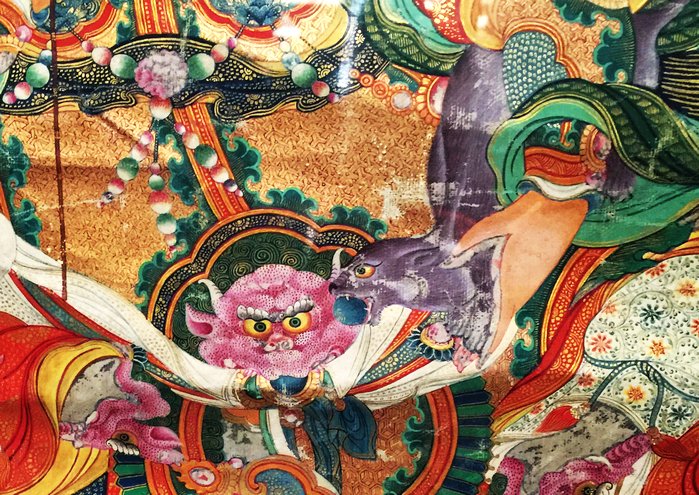
Perhaps Michelangelo at first wanted to portray the mouse as a common ubiquitous rodent, but later enhanced this idea by providing a monstrous combined head with a second gaping mouth, which was a direct link to the Oriental symbols of all-devouring Time. Michelangelo most likely saw these symbols in the samples of Eastern art that reached Italy in his time. Similarly, the images of Hindu gods and Buddhist saints — depicted with the mouse, the mongoose, etc., usually placed under their left hand — could also have reached him and attracted his attention. Erwin Panofsky may have missed the “half-Oriental” look of the statue of Lorenzo and the symbolism of all-devouring Time in the New Sacristy because of a common problem, accurately noted by the Russian art historian Alexander Yakimovich, who pointed out the deficiency of the classical art history, in being limited only to European civilization, and criticized the latter’s condescending attitude to the richness and venerable age of the cultures belonging to other civilizations, such as, for example, the Oriental ones (A. Yakimovich, Heinrich Wölfflin and others in Heinrich Wölfflin, Renaissance and Baroque. St. Petersburg, 2004, pp. 30-31).
Attempts to plumb the mysterious intention behind the Medici Chapel and to solve the riddles of its artistic design should be continued. This page of history has not yet been fully turned over, and the currents of creativity of the great Florentine still create fields of the highest intellectual tension in the world of today.
